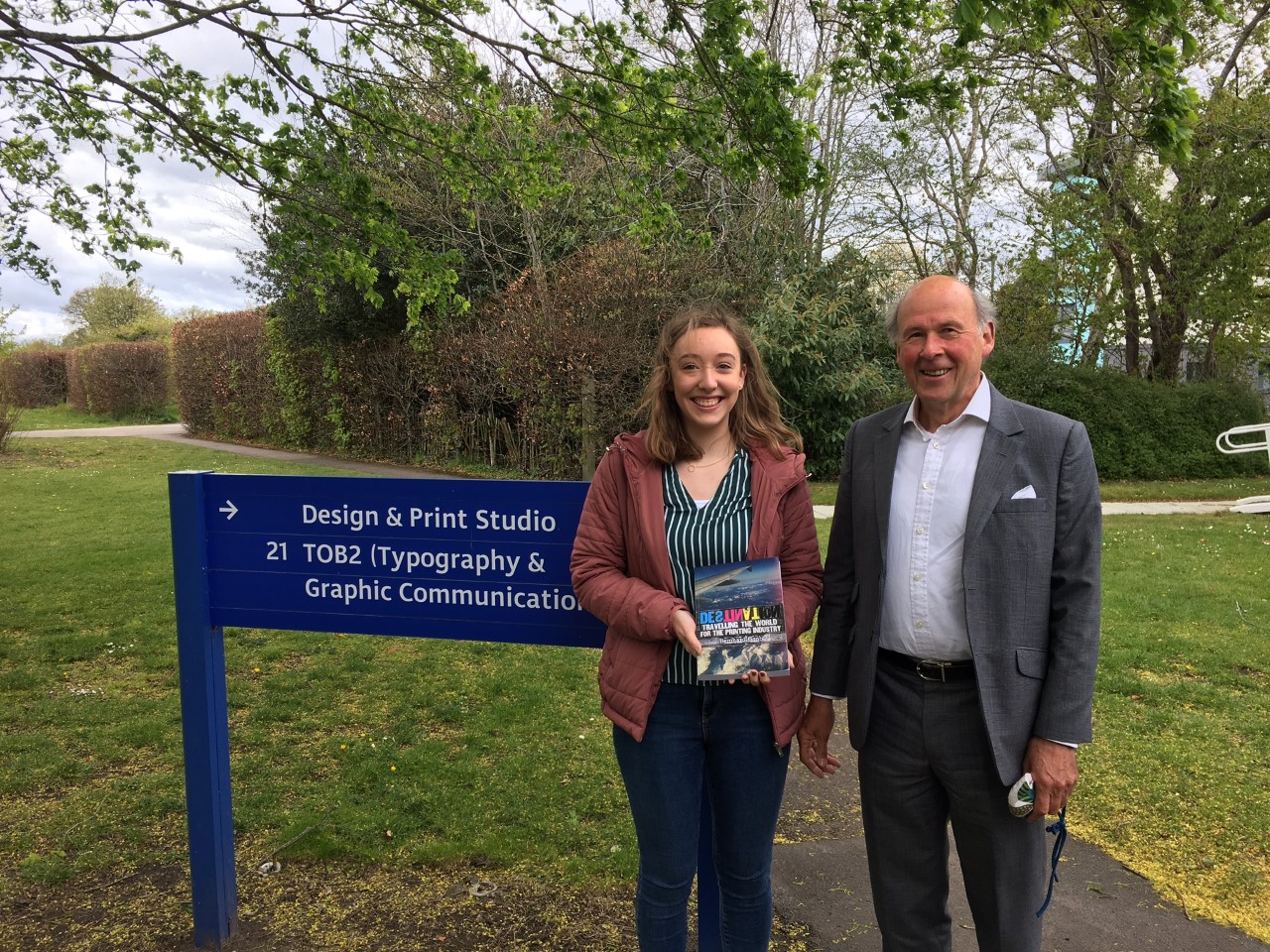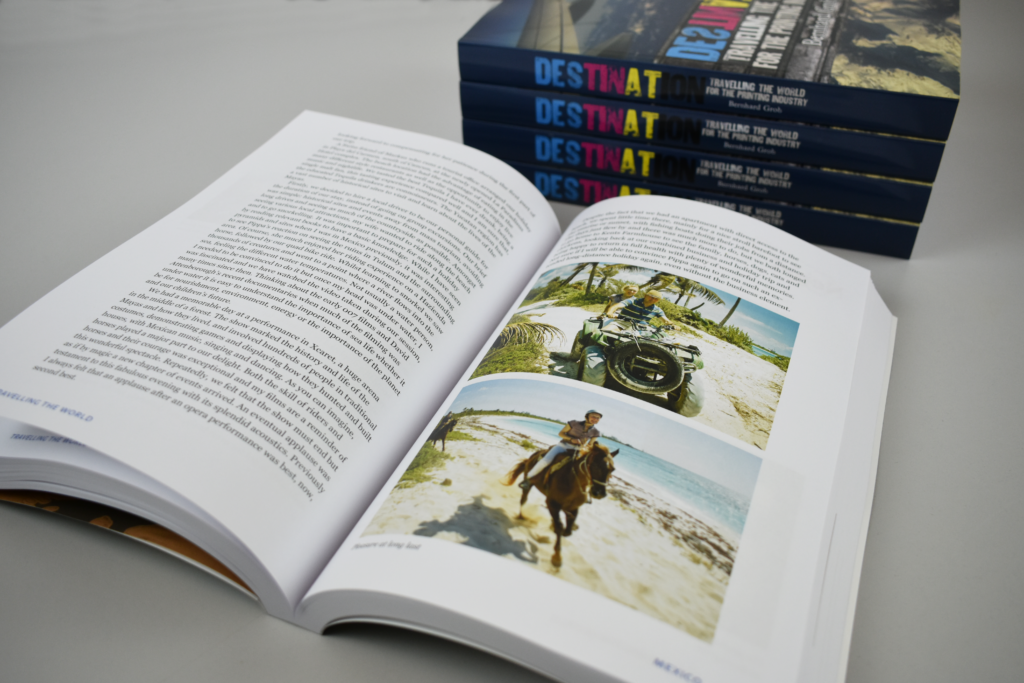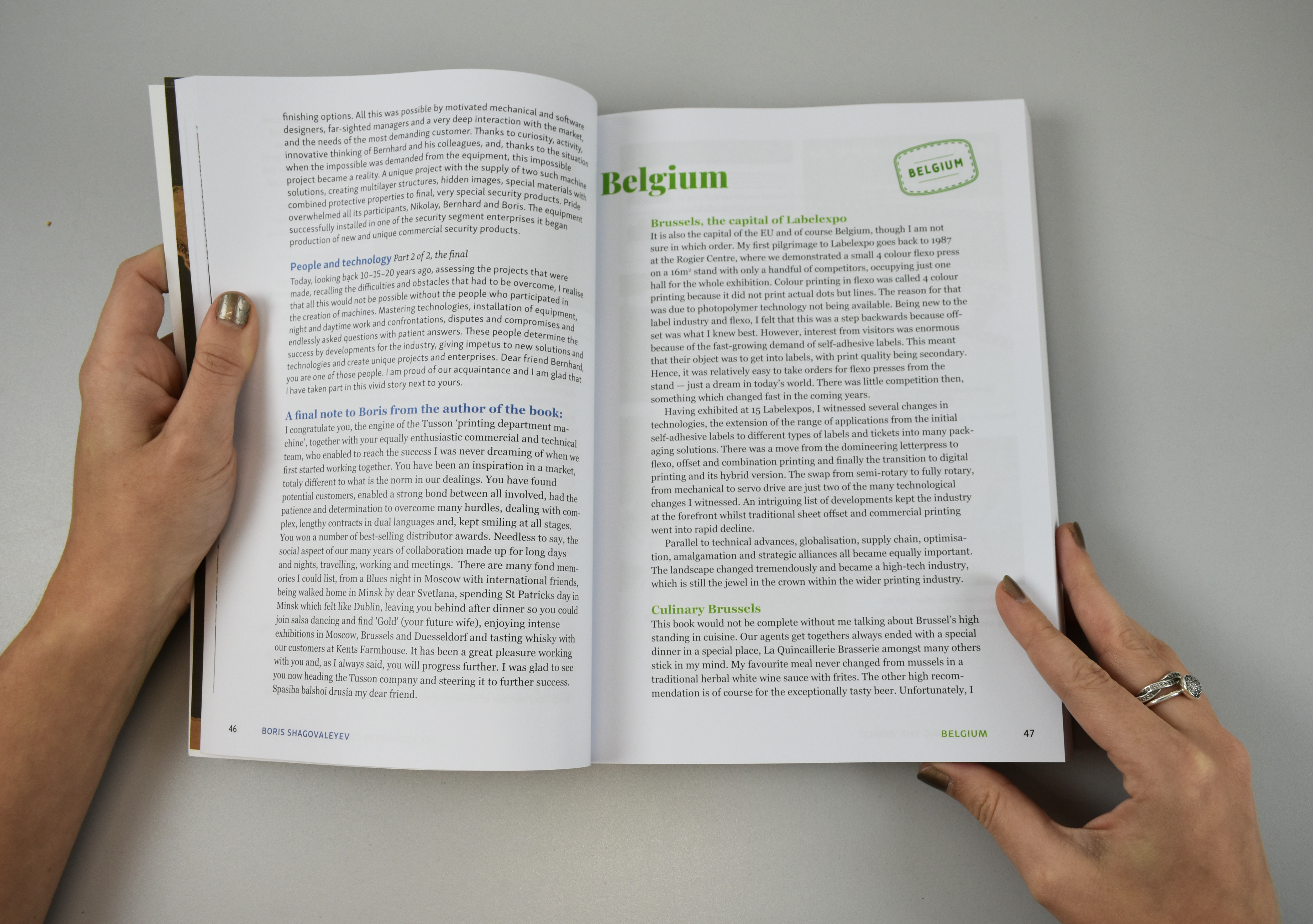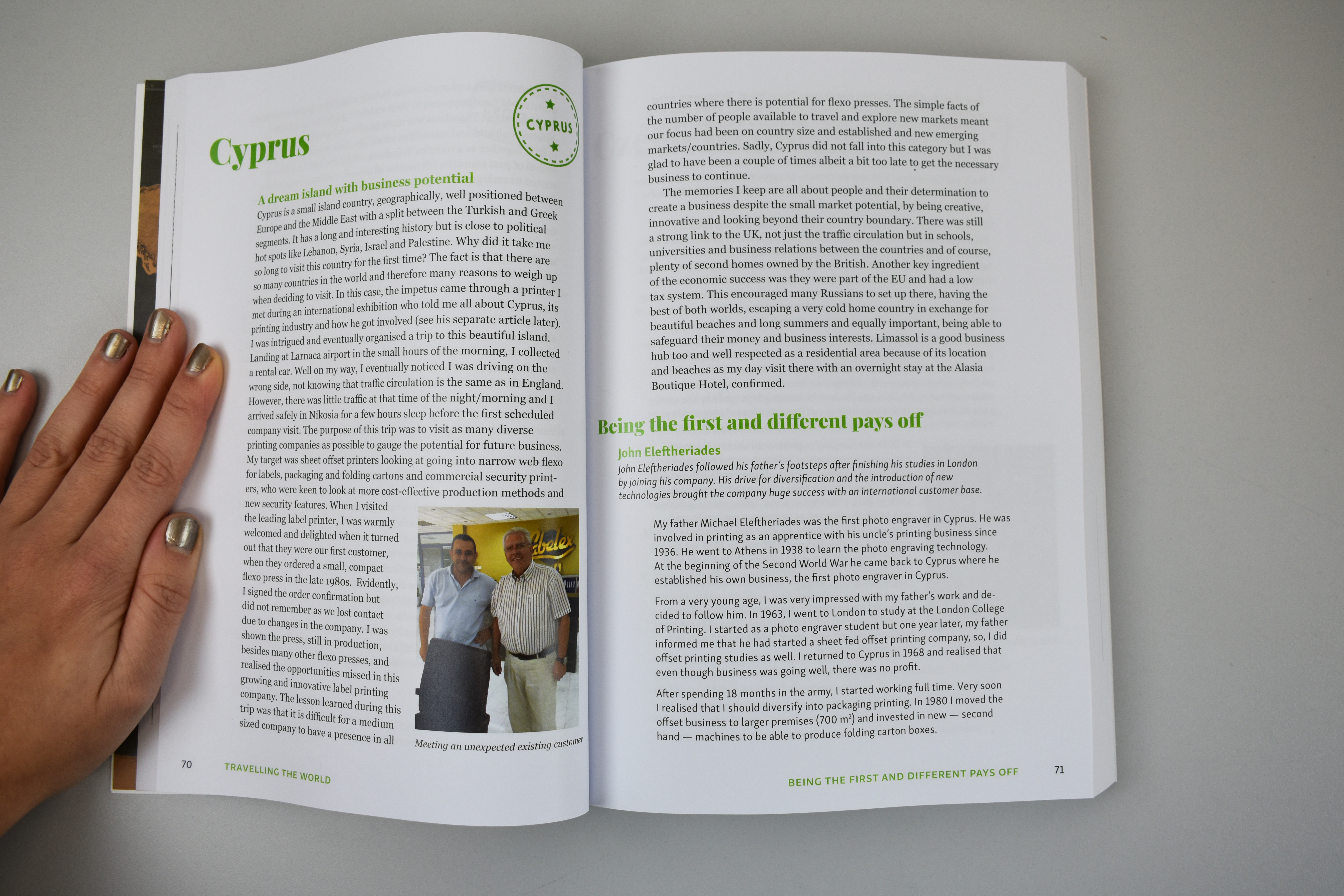Background
Over the last thirty years in the label and packaging printing industry, Swiss-born Bernhard Grob has travelled across the world to promote and sell flexography printing presses for the company Edale Ltd. of which he was a co-owner and Managing Director. During these travels, Grob has written a series of annual travel journals, detailing his experiences, and the developments and issues in the printing industry that he came across, now collated into his book; ‘Destination: Travelling the world for the printing industry.’
Grob enlisted third-year student Ruth to design the inside pages of his book with the main aim of producing a consistent layout appropriate to the content. This would involve proofreading, editing and typesetting the text, and sorting, editing and arranging corresponding imagery. Clarity needed to be achieved, whilst also ensuring that the book remained engaging and interesting. The client stated that they were aiming for this project to be ‘something that is not the norm, something that is different to everything else on the bookshelf, something unique’ and hoped that, as a student designer, Ruth would be able to expand her knowledge of the subject matter whilst also bringing a more youthful and on-trend approach to the design.
Additional stakeholders
The book was originally intended to be printed as part of a live event at the international Drupa print exhibition in Dusseldorf, Germany, initially due to take place in April 2020, then pushed back until 2021, until it was eventually cancelled entirely until 2024, due to Covid-19. Belgium-based digital printers, Xeikon, agreed to produce and print the book, to demonstrate their leading technology and highlight their high-quality digital colour printing.
After printing, the sheets were sent to be bound by book manufacturers Mueller-Martini who produced the final outcomes ready to be distributed. Professional designer Richard Jones was also part of the project as the designer of the book cover.
Throughout the project it was important to consider the various factors and influences on the production of the final book, whilst also maintaining necessary contact with the relevant stakeholders. These industry professionals allowed me to gain valuable insights into the publishing sector, improving my communication skills and expanding my technical knowledge.
Target audience
The publication is aimed at professionals within the printing industry, specifically those producing self-adhesive labels and packaging. The book will help to inform their practice, provide technical knowledge, be a reference point on the development of printing processes and most importantly, detail the entertaining experiences of the author on his travels around the world. It also includes articles from prominent international figures within the industry, whose inclusion will help promote the publication. As the book features many technical aspects, it is unlikely to appeal to the general public who have little knowledge of printing processes, and is therefore not for sale, but rather distributed with financial donations to the department of Typography and Graphic Communication at the University of Reading being welcomed.
Deliverables
- Proofreading and editing of all text and imagery
- Design of inside pages for the entire book, specified to be in full CMYK throughout to highlight the high-quality colour printing of Xeikon
- A loose bookmark that is printed separately and fits into the front of the book containing information regarding donations
- Input on the design of the cover
Design process
Research
Receiving and writing the brief was straight-forward in content yet complex in compiling as information was provided in small sections and by a number of stakeholders which I then had to combine into a succinct single brief. After clarifying the responsibilities of each party involved, I had a much clearer understanding of my role within the whole project and what each stakeholder was expecting of me.
Taking inspiration from the Swiss heritage of the client, I carried out research into interesting book layouts (figure 1), within the theme of travel (figure 2), and examples influenced by the famous Swiss style (figure 3), particularly editorial work by Jost Hochuli who is from the same town as the client, St Gallen (figure 4). Additionally, as the chapters of the book were organised by country, I had the idea of incorporating travel stamps into the chapter openers, inspiration of which can be seen in figure 5. Eventually these involved a mixture of illustrated stamps and photographs of the real stamps taken from the client’s various passports over his years of travelling.
Research into the client’s company, Edale Ltd, and the other stakeholders involved (Drupa, Xeikon and Mueller Martini), was also carried out to gain a better understanding of how the book would be produced and distributed, technical aspects involved in the project, and the motivations for each stakeholder in the project. I was also able to broaden my knowledge within the area of flexography and print exhibitions, having the opportunity to collaborate with international companies leading the sector.


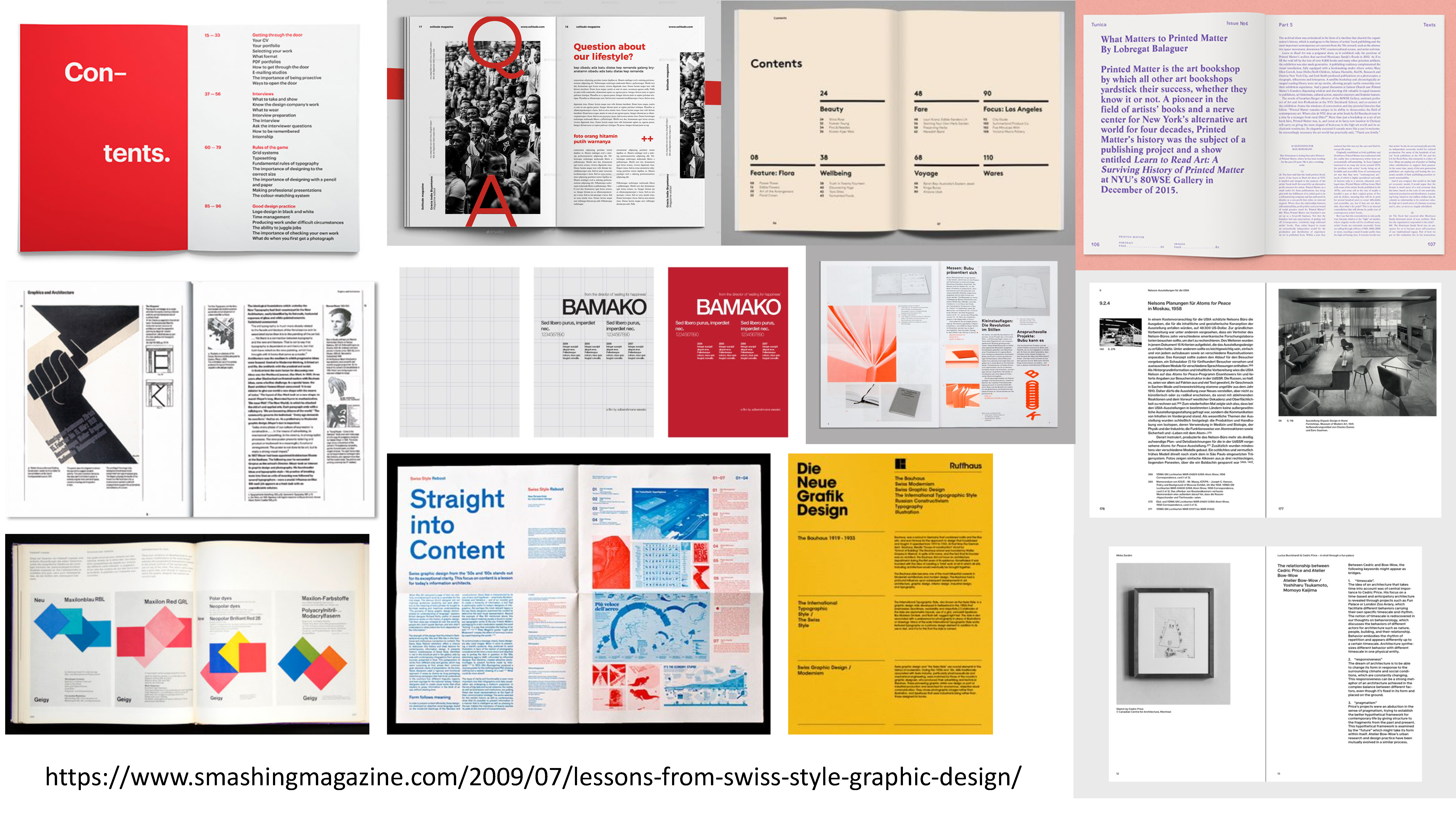
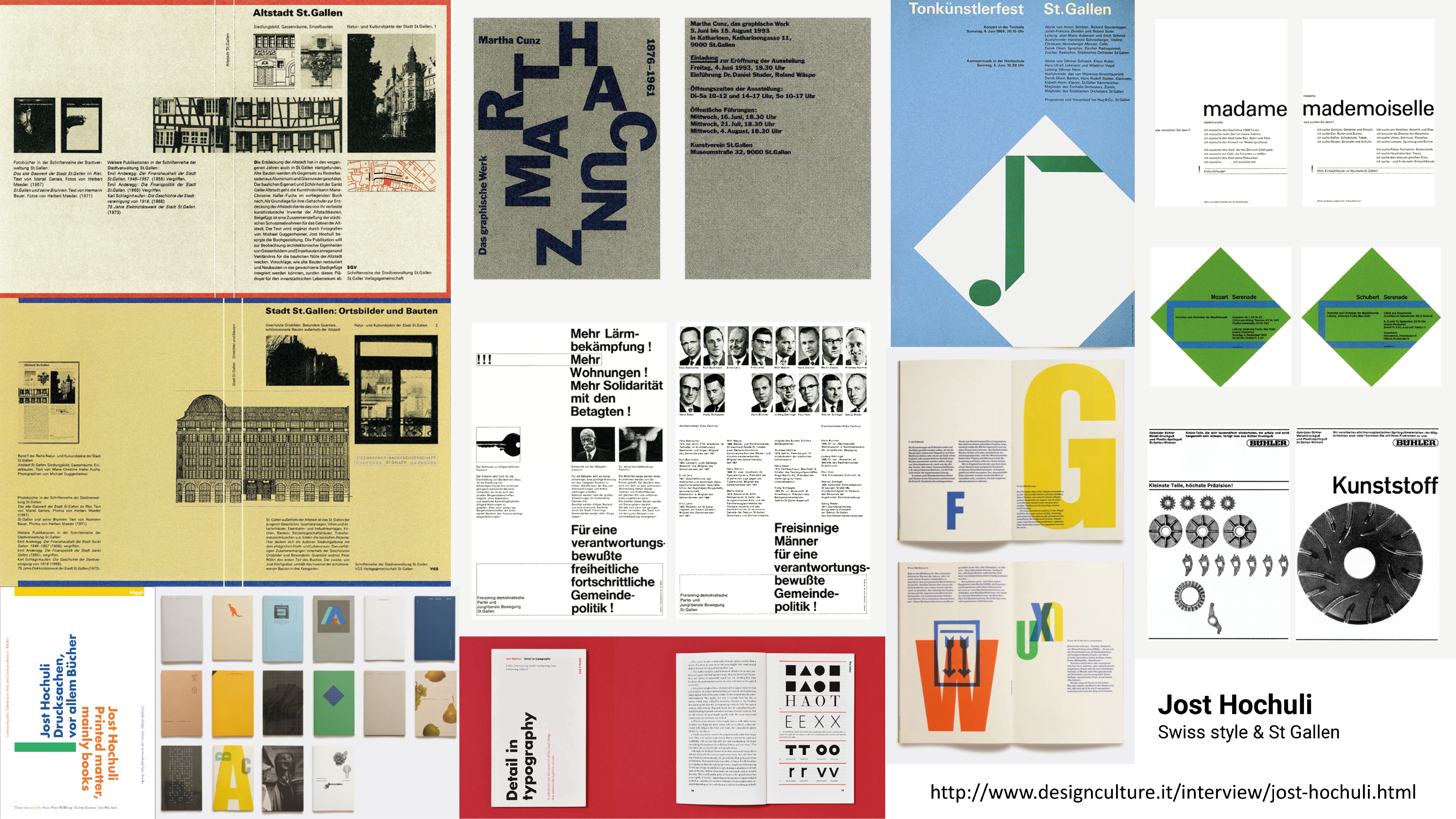
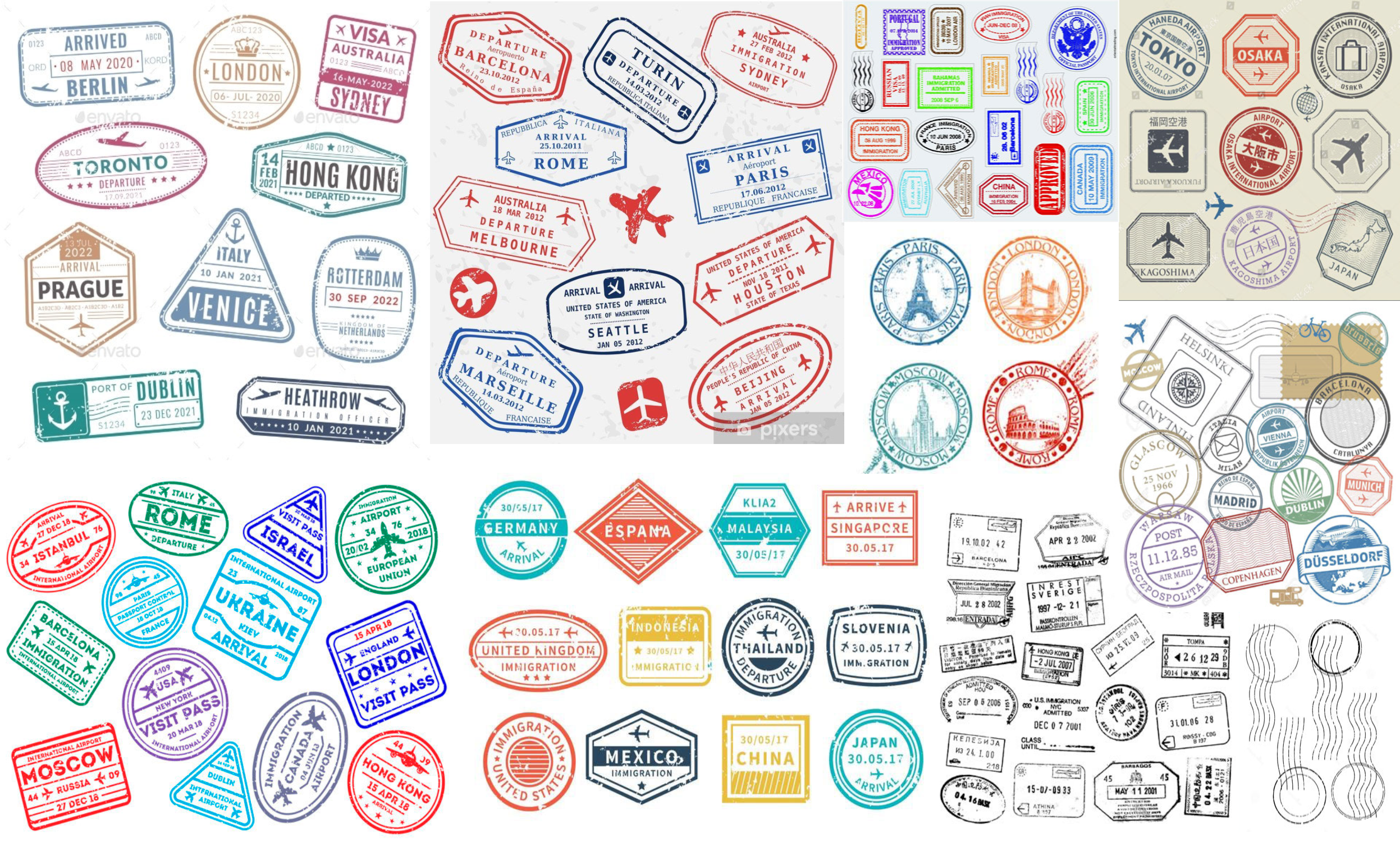
Content structure
The next step involved the client sending across all of the copy, which included a large text document and a series of photographs, sent both digitally and physically. I then organised these into their relevant country chapters, scanning in the physical photographs and ensuring all images were in CMYK and at least 300ppi, as requested by Xeikon to demonstrate their high-quality digital colour printing. The text was proof-read to ensure typographic consistency, such as capitalisation, the use of commas and correct use of hyphens, and to check for minor grammar errors given that English is the client’s second language.
Having read through the entire text, it was agreed with the client that the order of the content could be moved around slightly. Organised alphabetically by country, the book also contained additional articles written by friends and colleagues of the client, which originally interrupted the main text and disrupted the flow of reading and therefore the potential design and hierarchy. The client therefore allowed me to rearrange these articles to the end of each country chapter, with the addition of short descriptions of the external authors.
This initial stage of the project required great organisational skills, as there are around 60 chapters in the whole book, with a range in the number of images per chapter. This would later demand selective skills, ensuring that the best quality images were included next to the most relevant sections of the text. It also allowed me to fully experience the whole process of copy creation and editing alongside designing, a role I am now more familiar with and can build on in the future if I become a professional editorial designer (a career option I am currently considering).
Initial ideas
Using the content structure as a basis for the design, I created a number of initial layouts using a sample chapter from the text and accompanying images. Figures 6-10 demonstrate how these ideas progressed from initial sketches to digital iterations, experimenting with the grid system, number of columns, image placement, chapter openers, measure and typeface combinations. A key concept that was taken forward from this initial ideas stage was the inclusion of similar serif and sans serif typefaces for the different authors of the book, a serif typeface would be used for the main author (the client) which would be differentiated to the articles written by other authors with a sans serif typeface, ideally within the same type family.
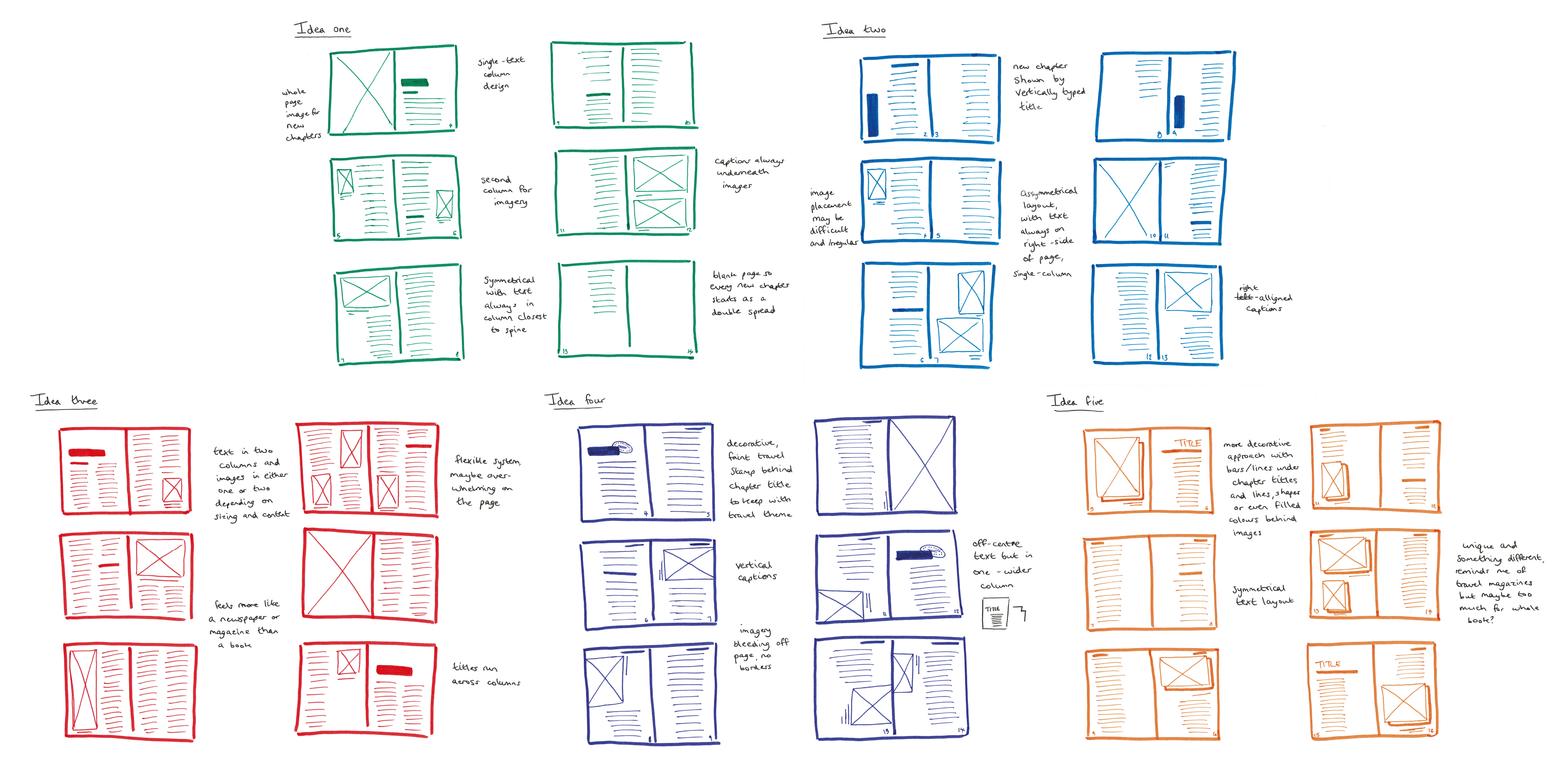
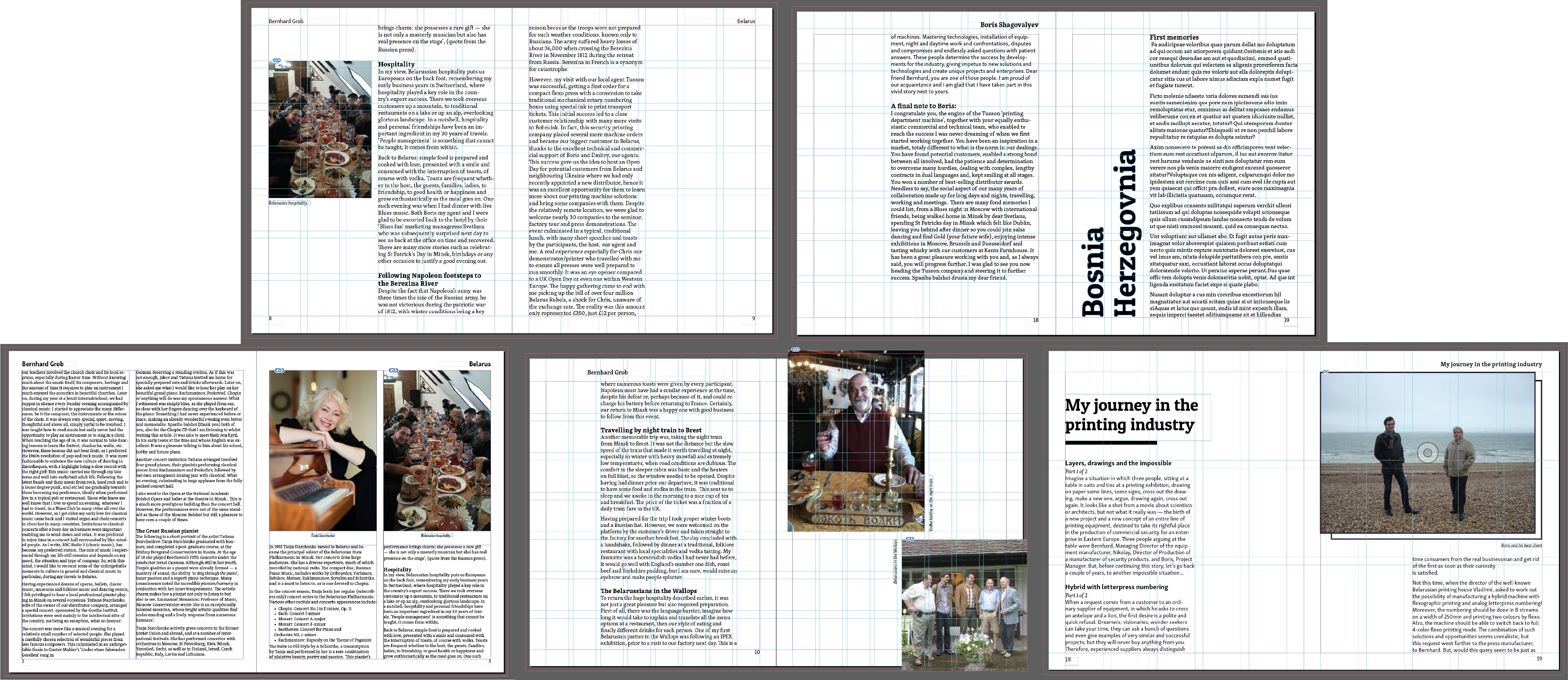
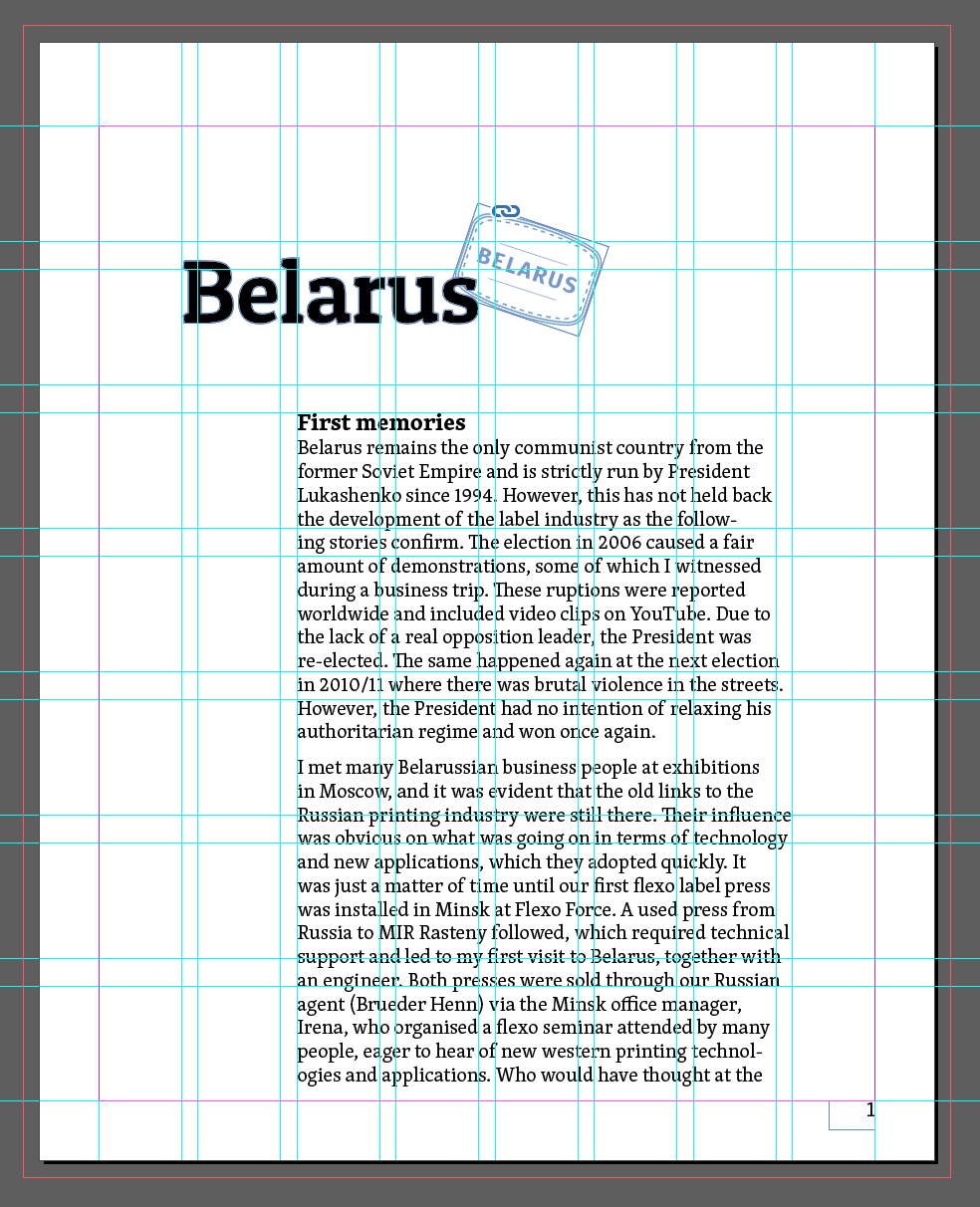
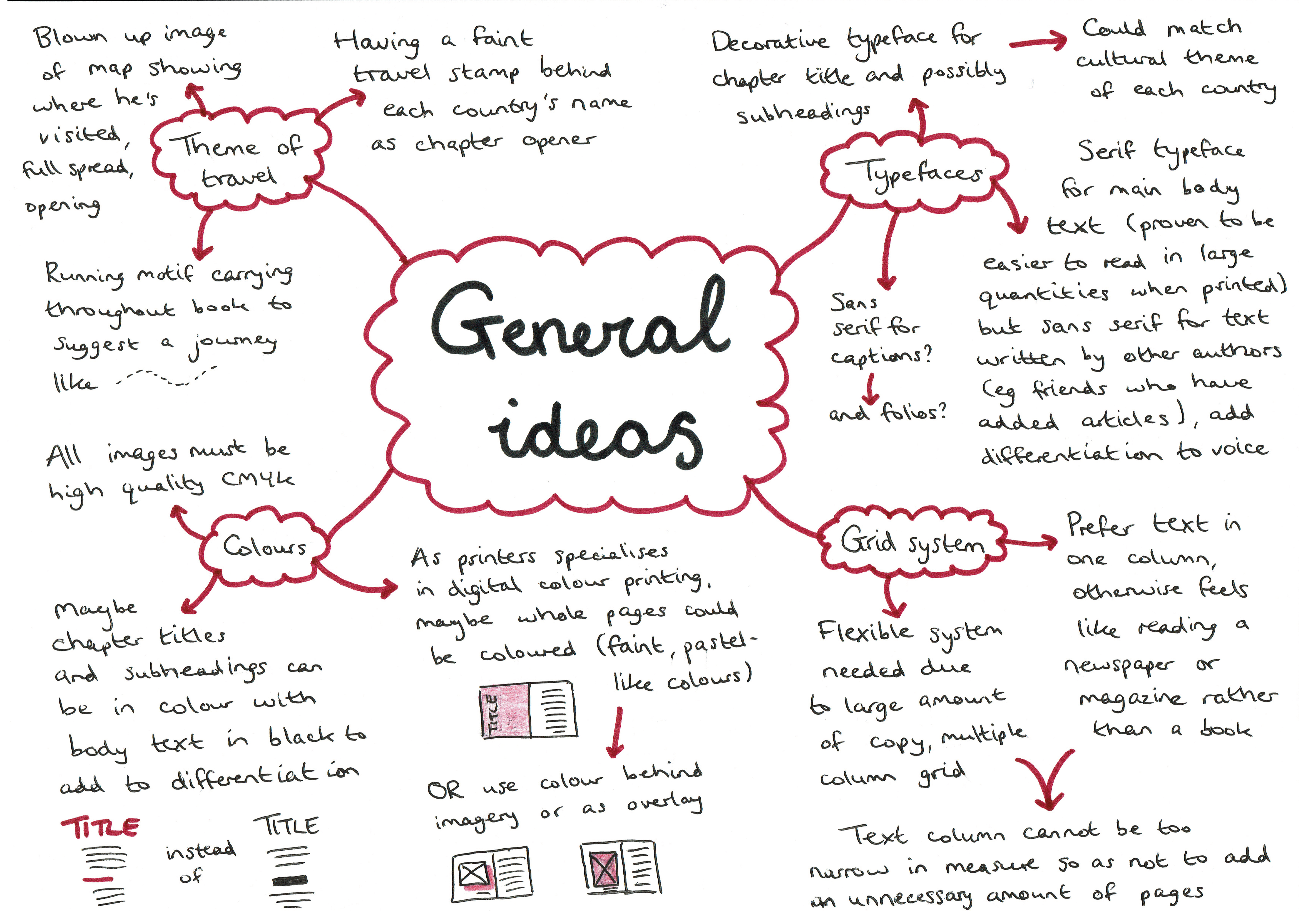
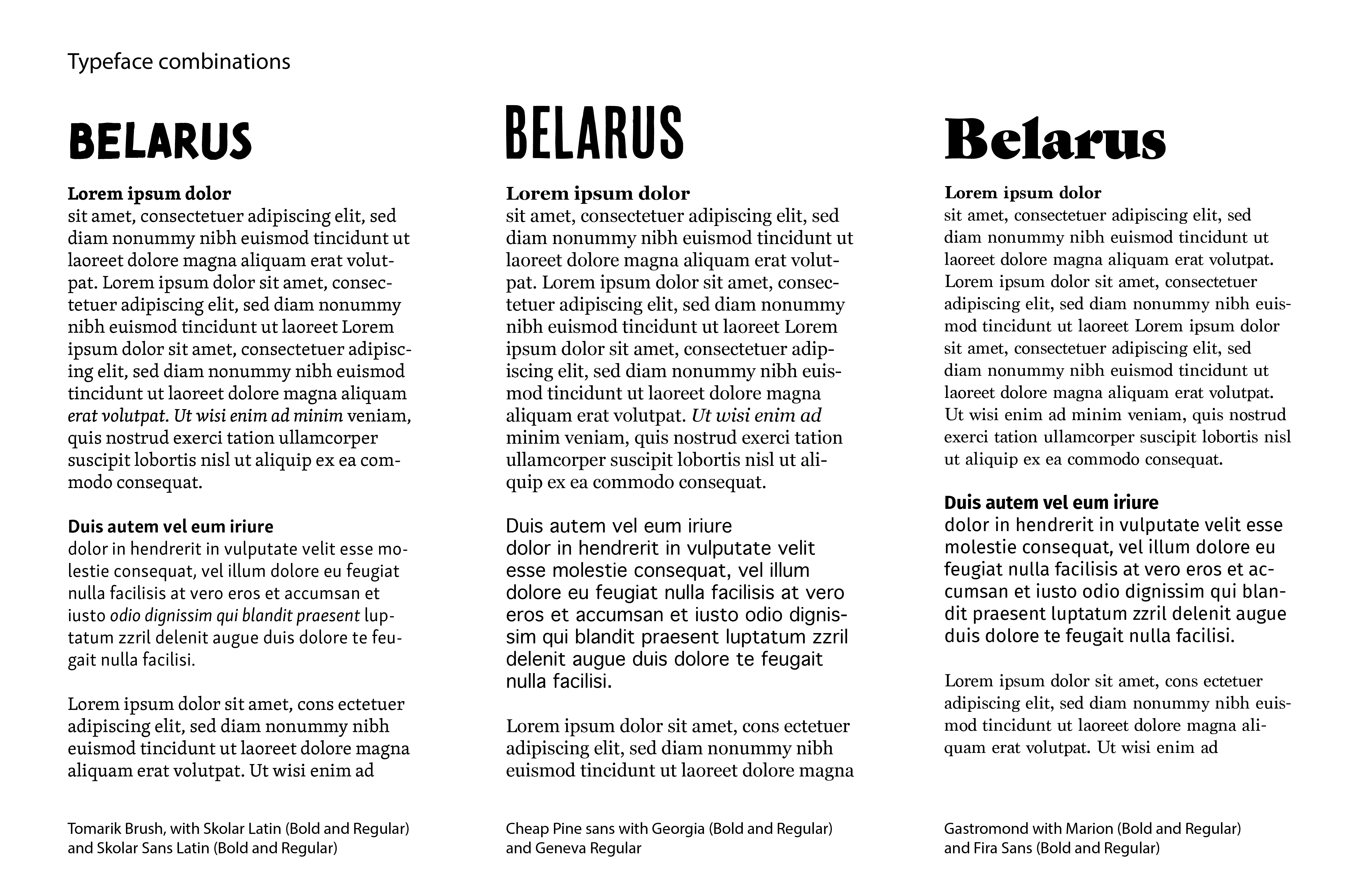
Design development
Over the course of six months, the design progressed substantially. Frequent online meetings with the client proved extremely useful in the development of the design, as a wide range of options were shown and then narrowed down based on personal preference and effectiveness for the large amount of copy.
Taking into account the various levels of text and inspired by the ‘step’ approach often used in Swiss design and by Jost Hochuli, figures 11-14 shows how this typographic design was applied to the content.
After a design direction was established, I attempted to apply it to the copy of the entire book. This highlighted some challenging issues, mostly the unnecessary length of the book created by paragraph spacing (479 pages without images), which was resolved by using indents (figures 14). Additionally, the large number of images sometimes proved difficult to match up to the relevant paragraphs efficiently, however detailed notes from the client helped solve this. Further considerations were then also made, regarding the use of colour throughout the book, the chosen display typeface, spacing between headings and prelims design (figures 15 and 16).
At this point, I referred back to only making amendments to a smaller sample of the book, roughly the first 75 pages, to allow for quicker changes to be made whilst still designing enough of the varying types of content to understand how these would work throughout the rest of the book. After these issues were resolved, the new system was applied to the rest of the content, with only more minor alterations then being carried out afterwards (mainly moving some images around, some grammatical changes, addition of more images that better illustrated the content etc).
Throughout the design process, when it was realised that the book was going to be unnecessarily long, the dimensions of the pages were changed to a more effective size (from 160mm (w) x 200mm (h) to 170mm x 240mm), but all other aspects of the original print specification remained the same.


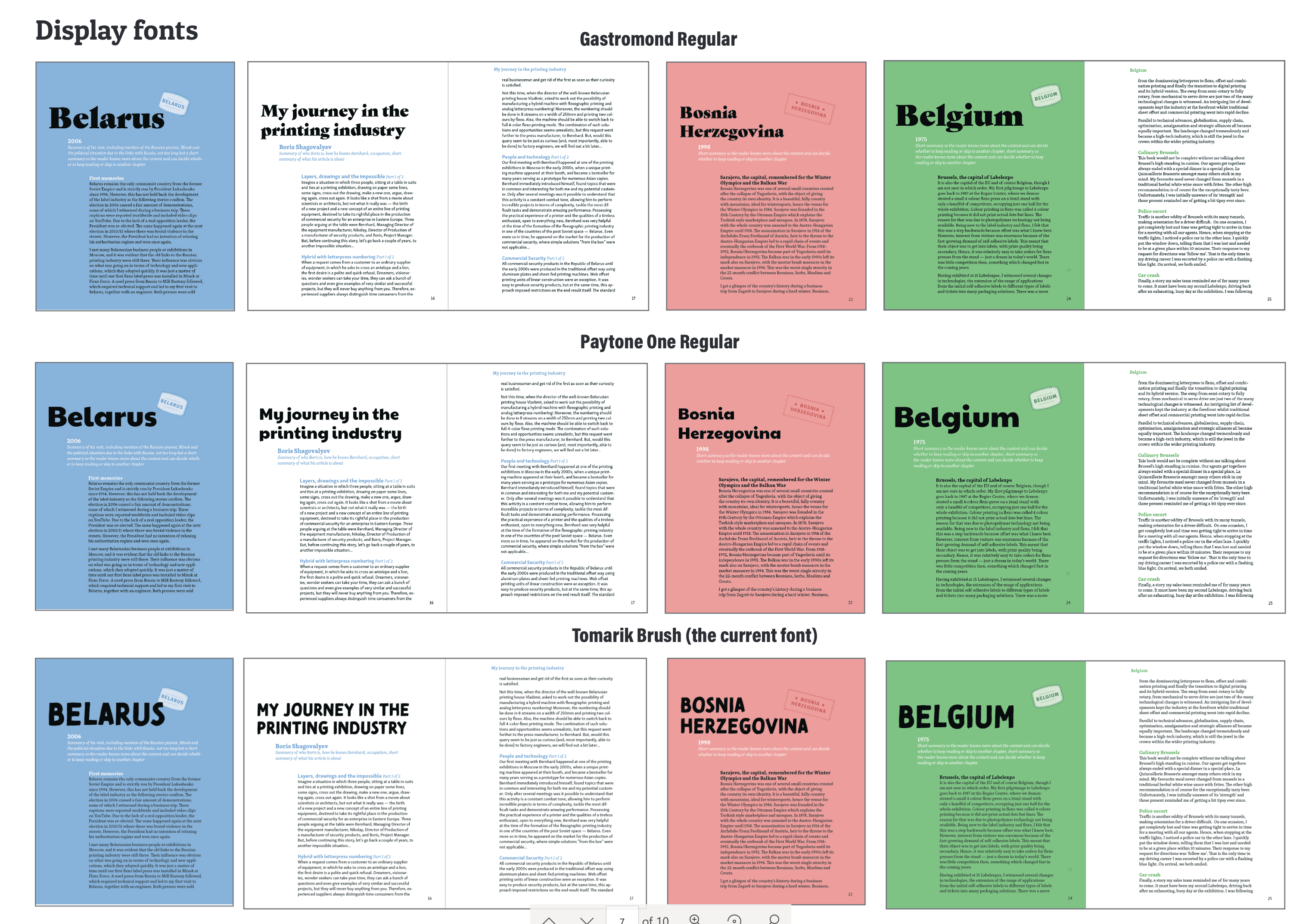

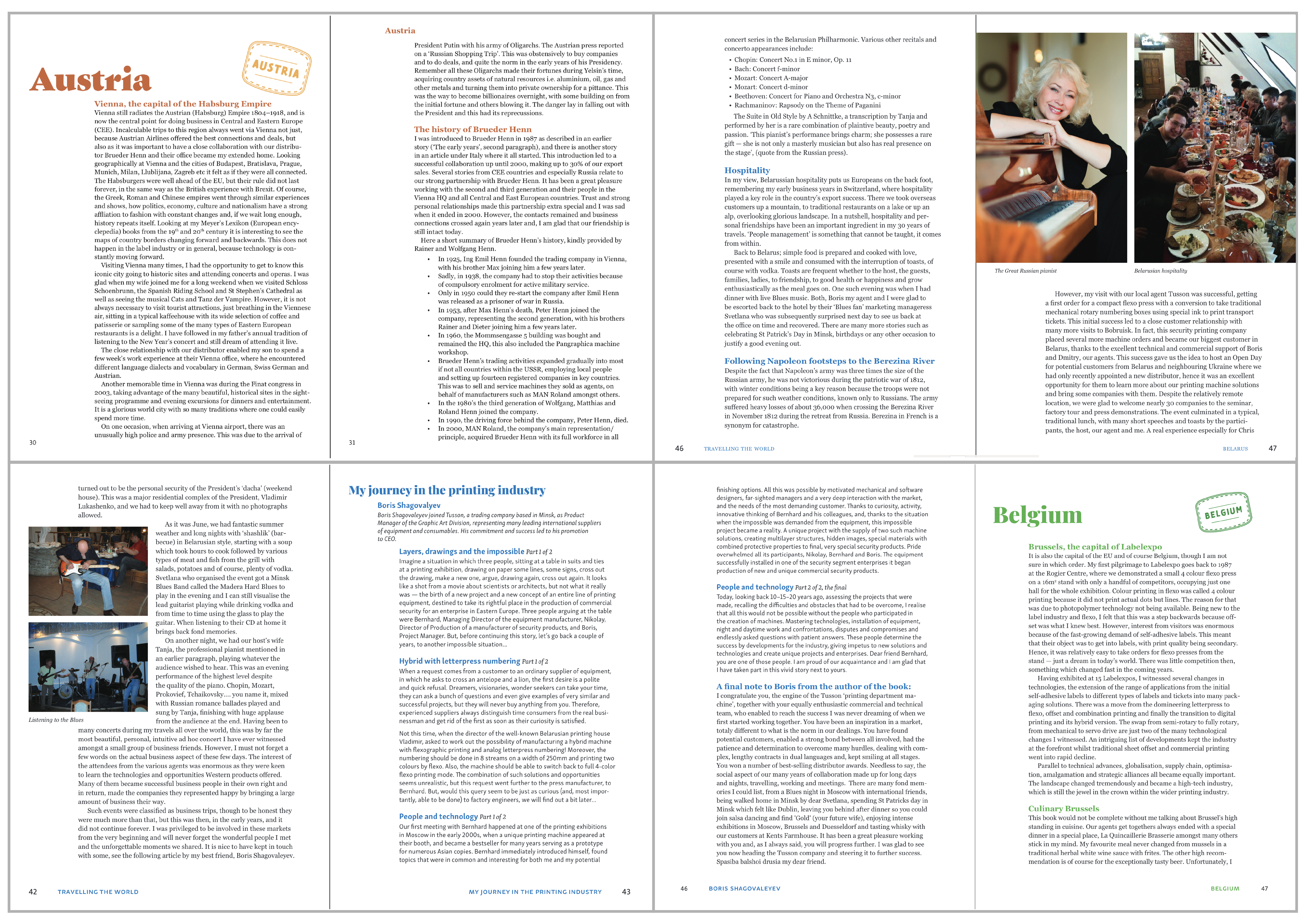
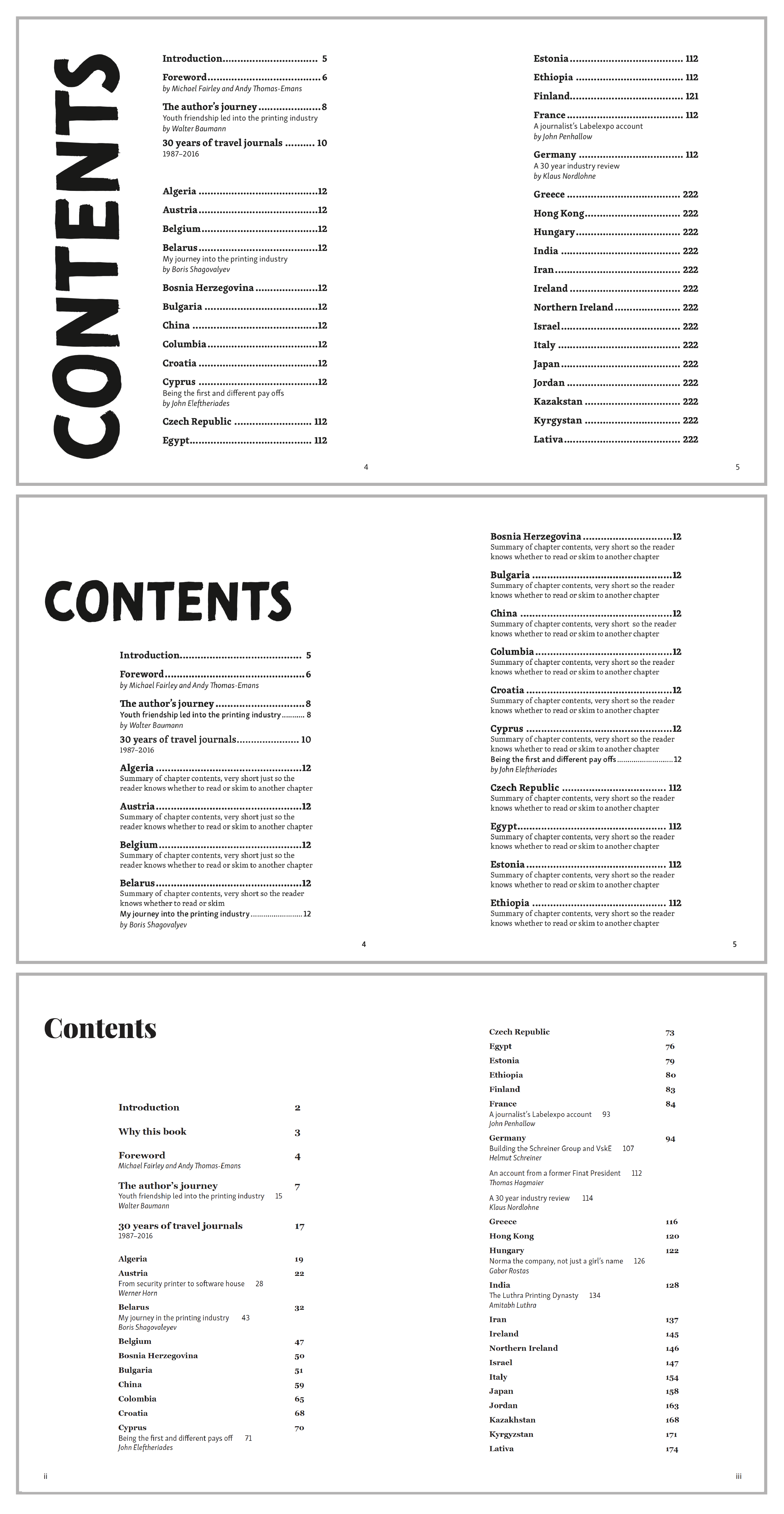
Bookmark design
In addition to the design of the inside pages, the client requested the design of a bookmark style slip that would be inserted into the front of the book informing the reader of the possible donations to the department rather than the book being for sale. This used text provided by the client which was then organised typographically to match the design of the inside pages, changing from a horizontal to vertical format to aid the reading experience. The developments of the bookmark can be seen in figure 17.
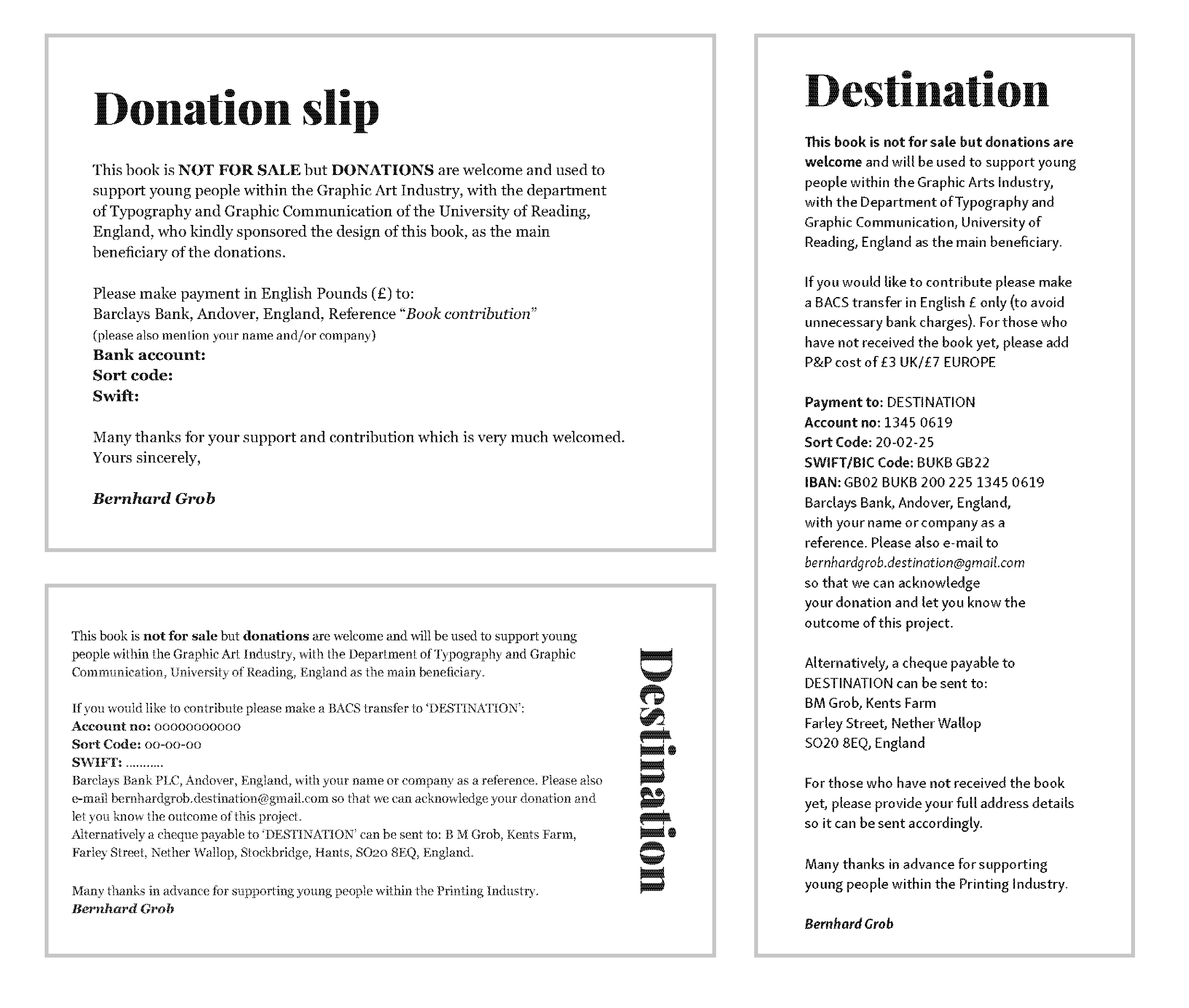
Production
Professional designer Richard Jones created the cover of the book, combining the themes of travel and printing, through the use of reflected type representative of letterpress processes. I was able to offer some input on the design of the cover, and made some changes to the back and spine, changing the metallic effects to a more legible navy, as can be seen in figures 18 and 19.
The final books were printed in Belgium and France on Xeikon’s SIRIUS and CX500 digital presses, before being sent to Switzerland to be finished by Mueller Martini on their SigmaLine. 1000 copies of the book were produced, 500 for the client and 500 for Xeikon and Mueller Martini to use as technical demonstration pieces for their industry-leading machinery. The production of the book also featured in an international webinar by Xeikon Cafe TV, which can be viewed here: https://go.xeikon.com/l/61642/2021-03-30/3sp4lx2
Although I was not immediately involved in the actual printing and crafting of the final books, it was important that I understood the production processes used and that my files were well-organised and print-ready, to ensure understanding and clarity across the different nationalities involved. Receiving copies of the final book was a really satisfying experience, and it feels like a great achievement to have produced a physical item in a year where digital deliverables have been prioritised. The full book was larger (in depth) than I had expected, as this was the first time I was able to fully visualise all 355 pages, but this only added to the overall feeling of satisfaction in holding something so large that I had designed. I had been slightly worried about the inner margins, but the main text block was appropriately placed on the page, with only some headings reaching into the margin on right-hand pages. However, as these are headings and are therefore in larger coloured type, these are still very legible and do not hinder the reading experience. Some of the images printed quite dark, although these had already been edited to be brighter and was more due to the actual printing outcome rather than the images supplied.
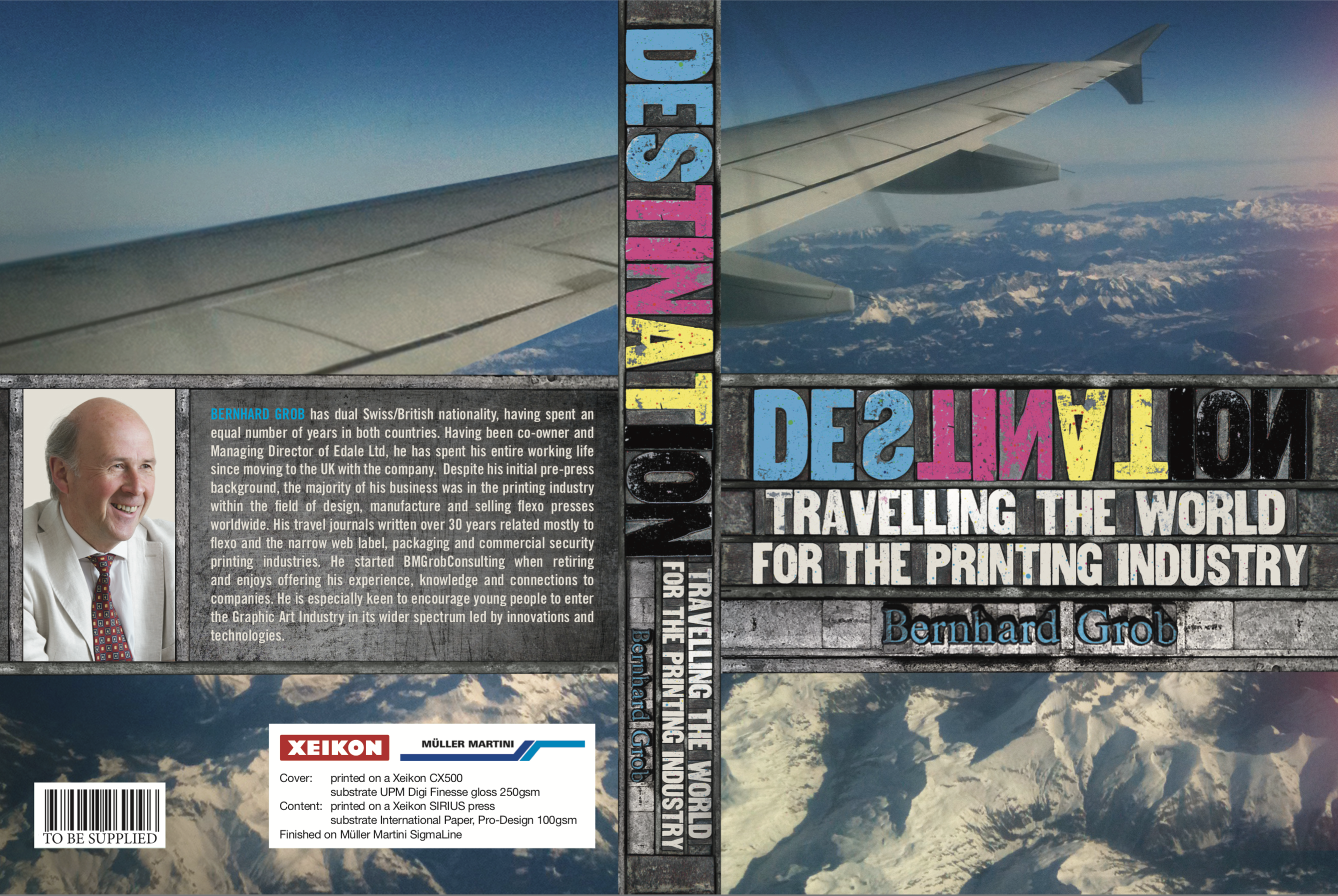
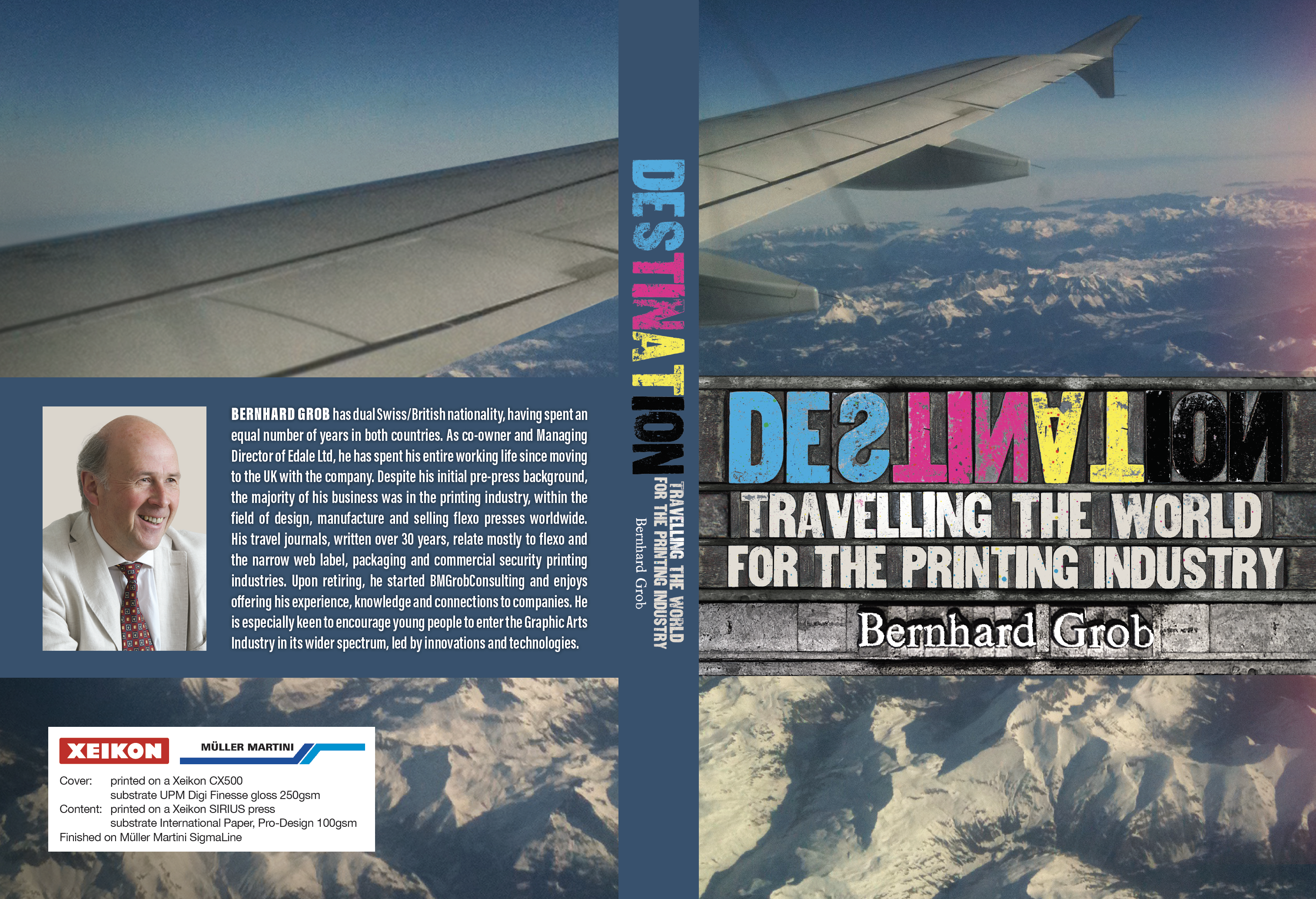
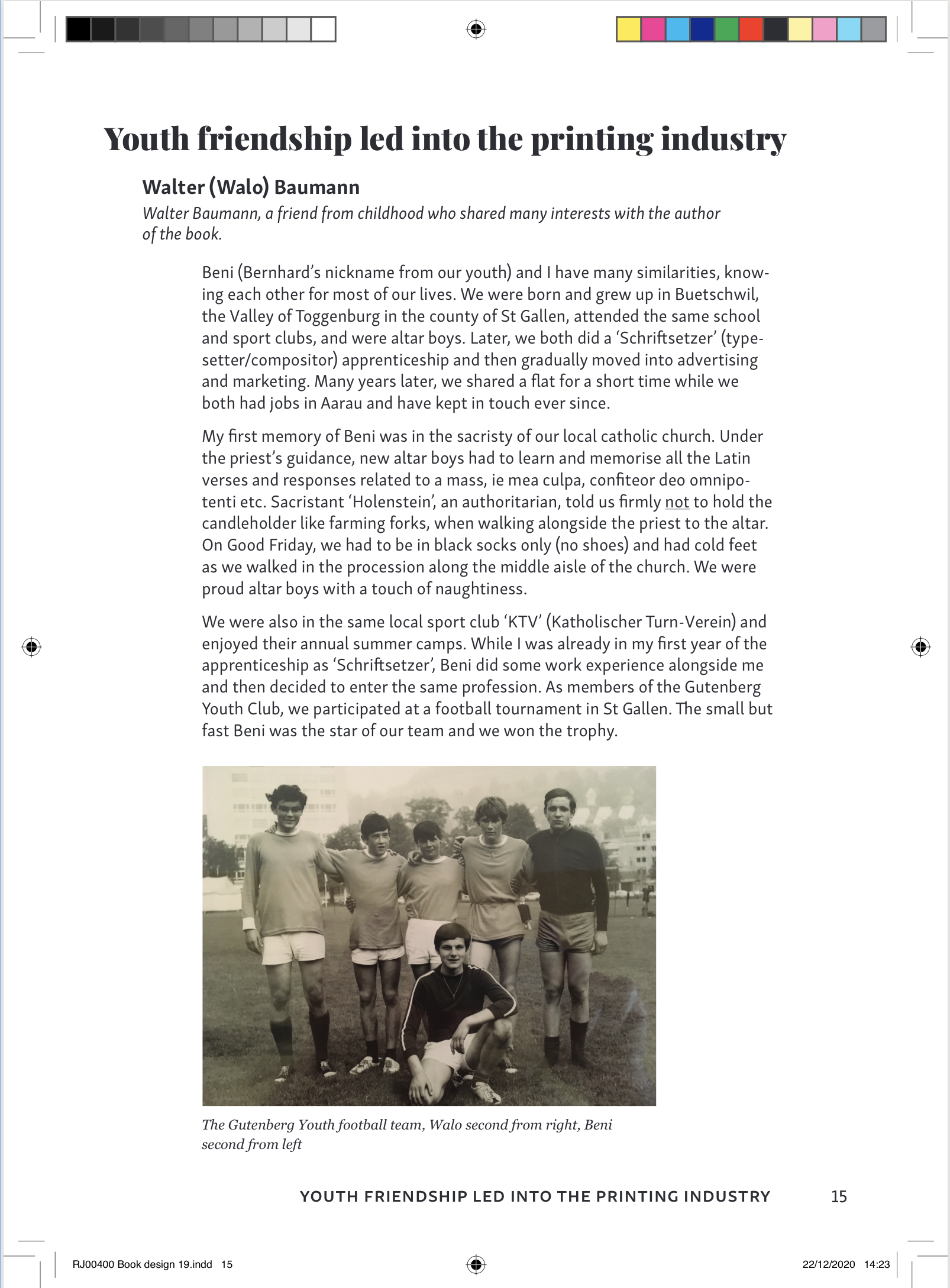

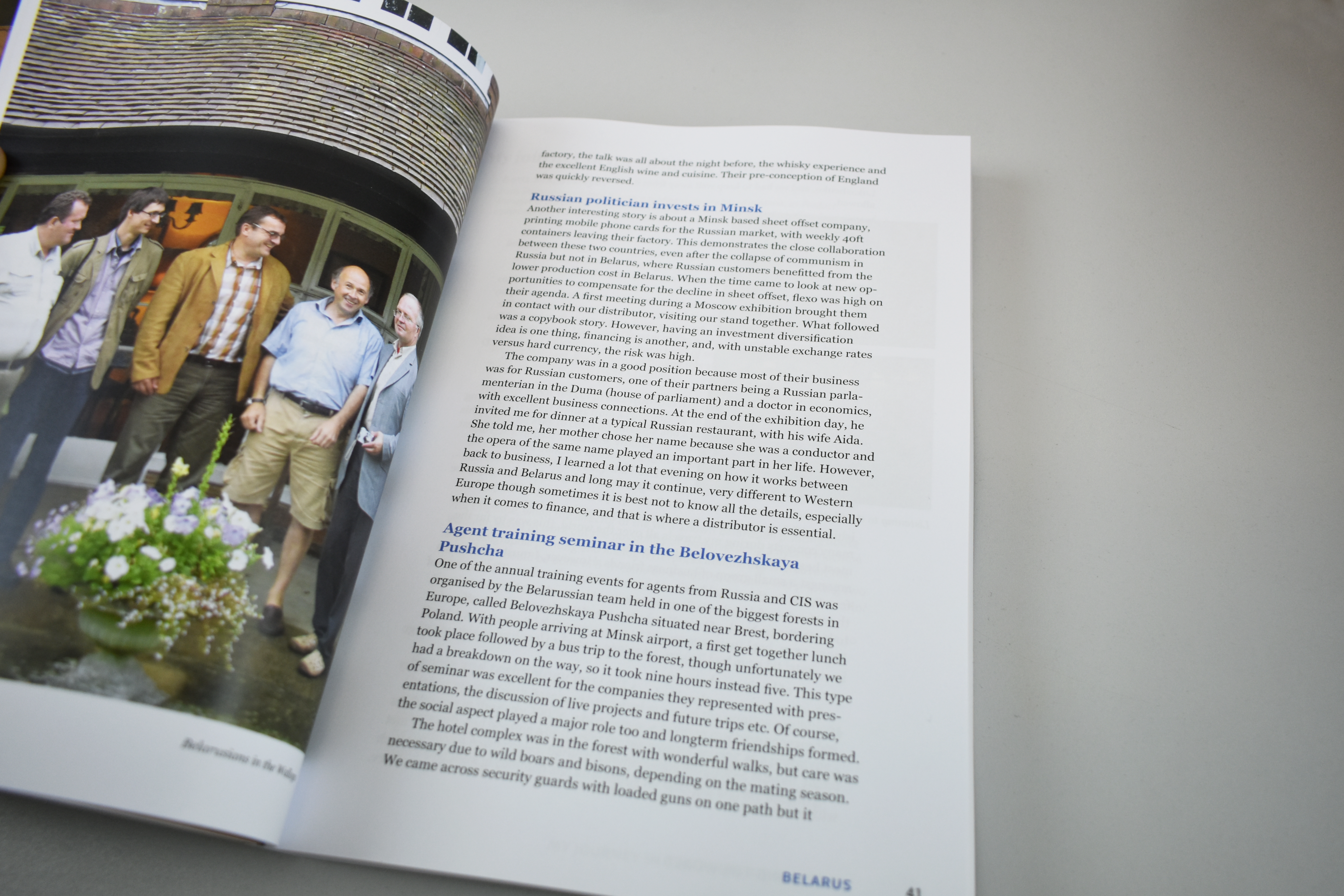
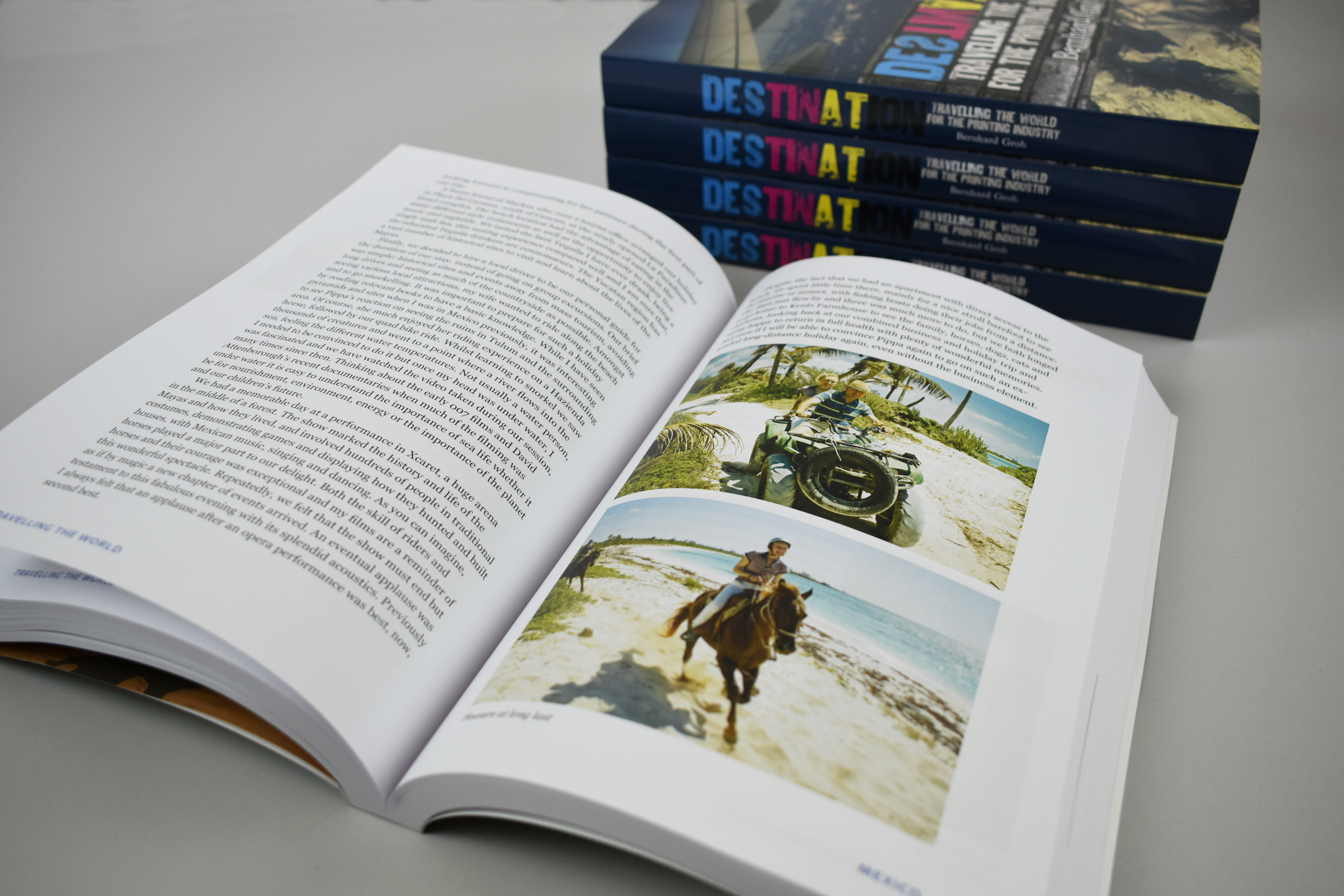
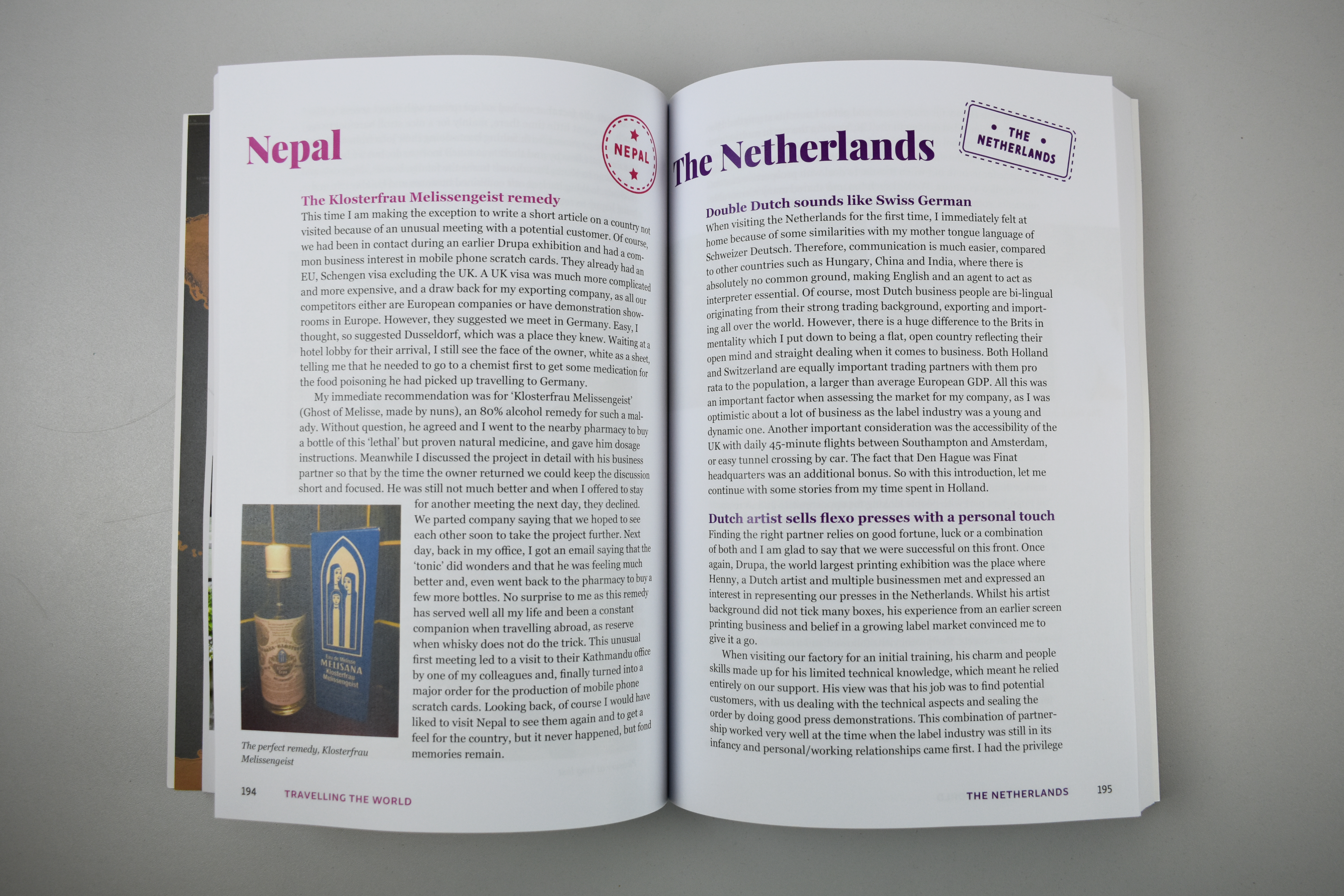
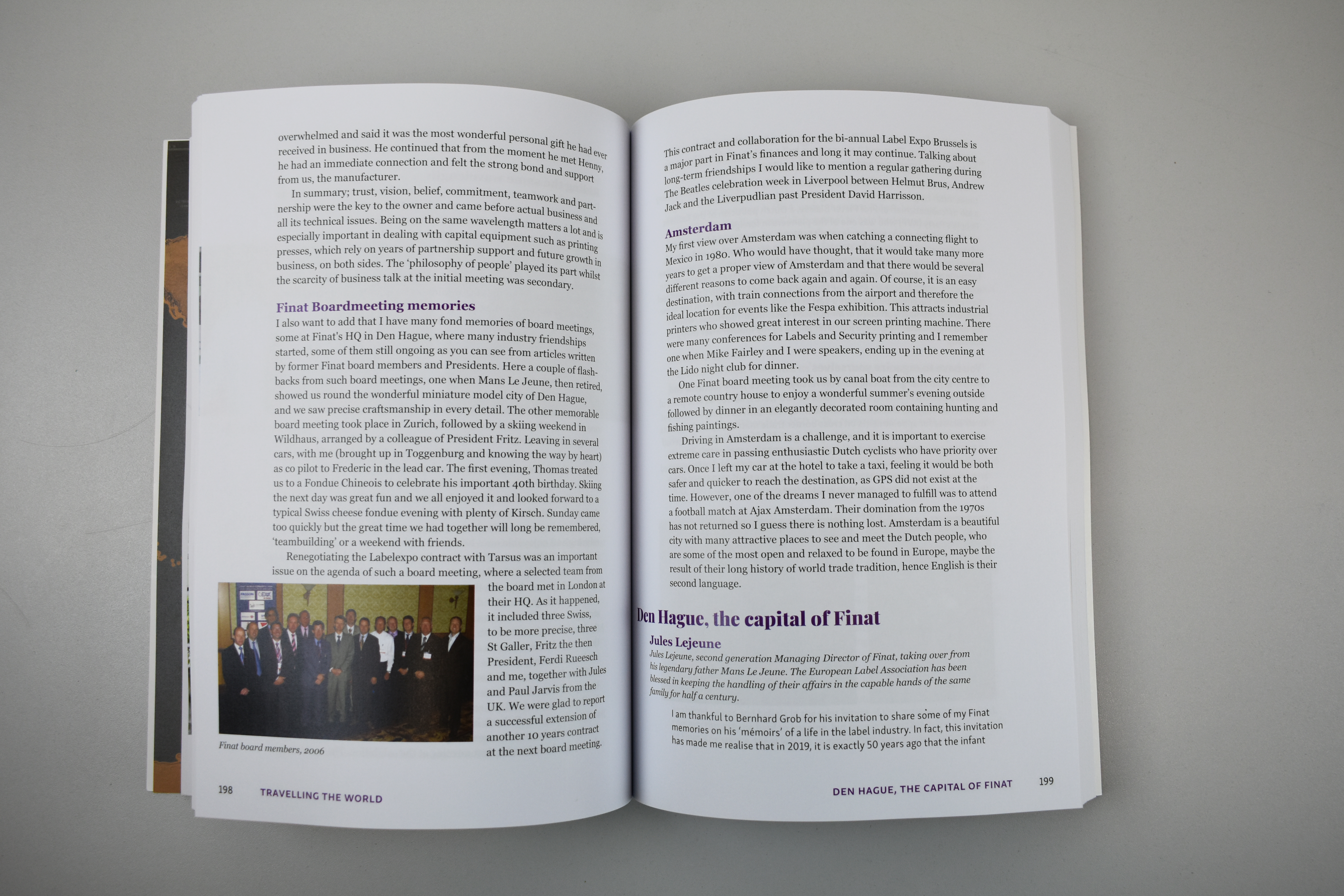
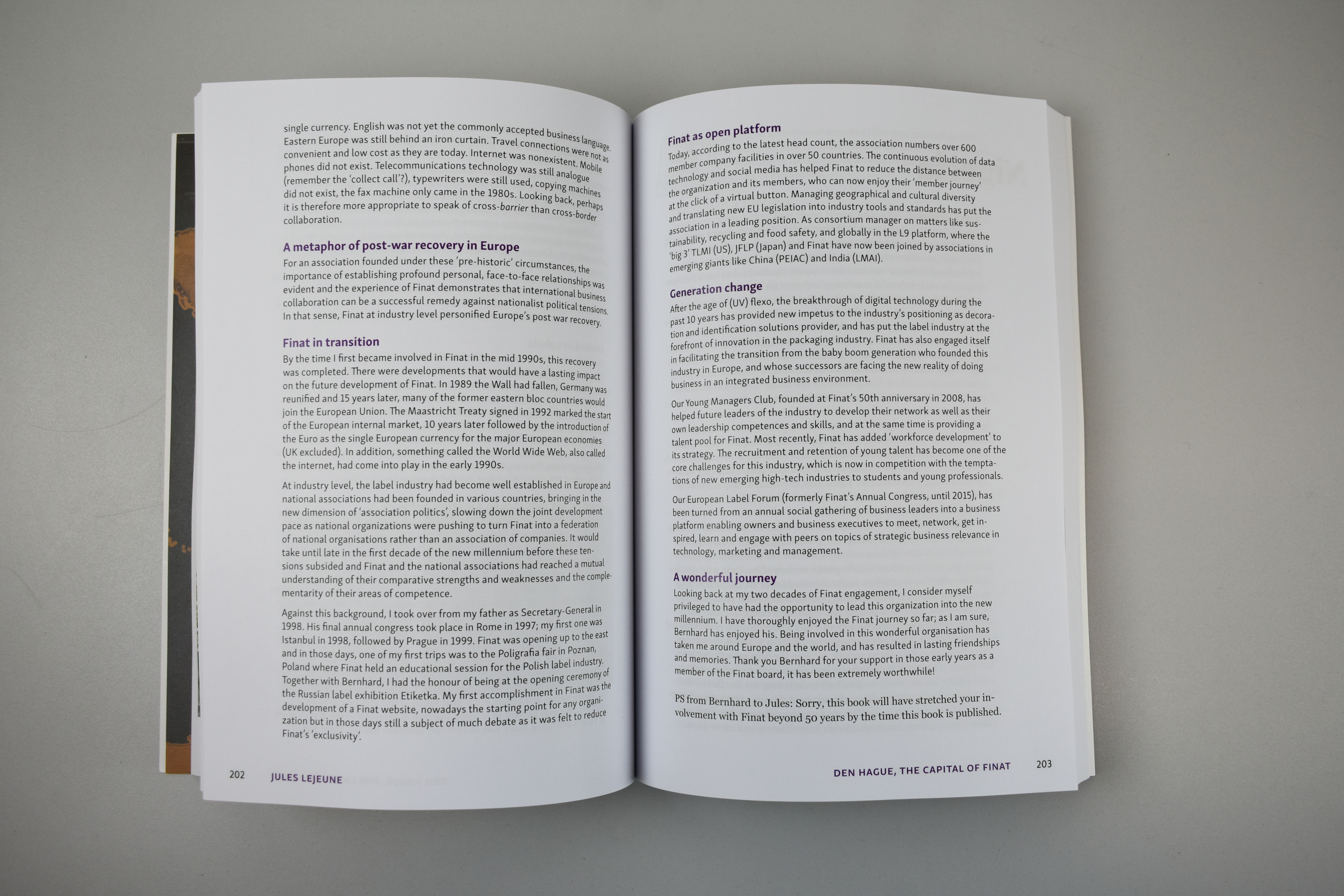
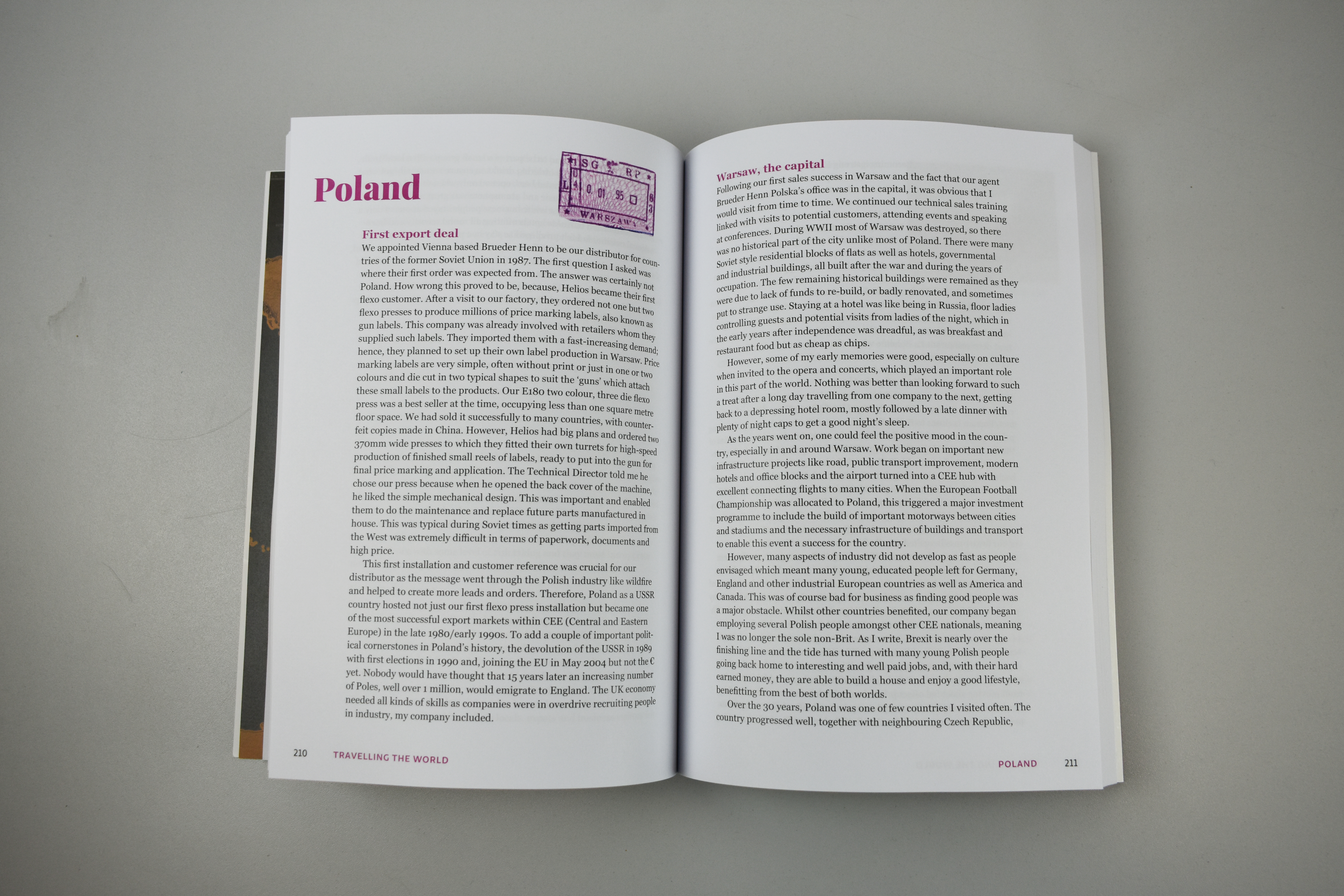
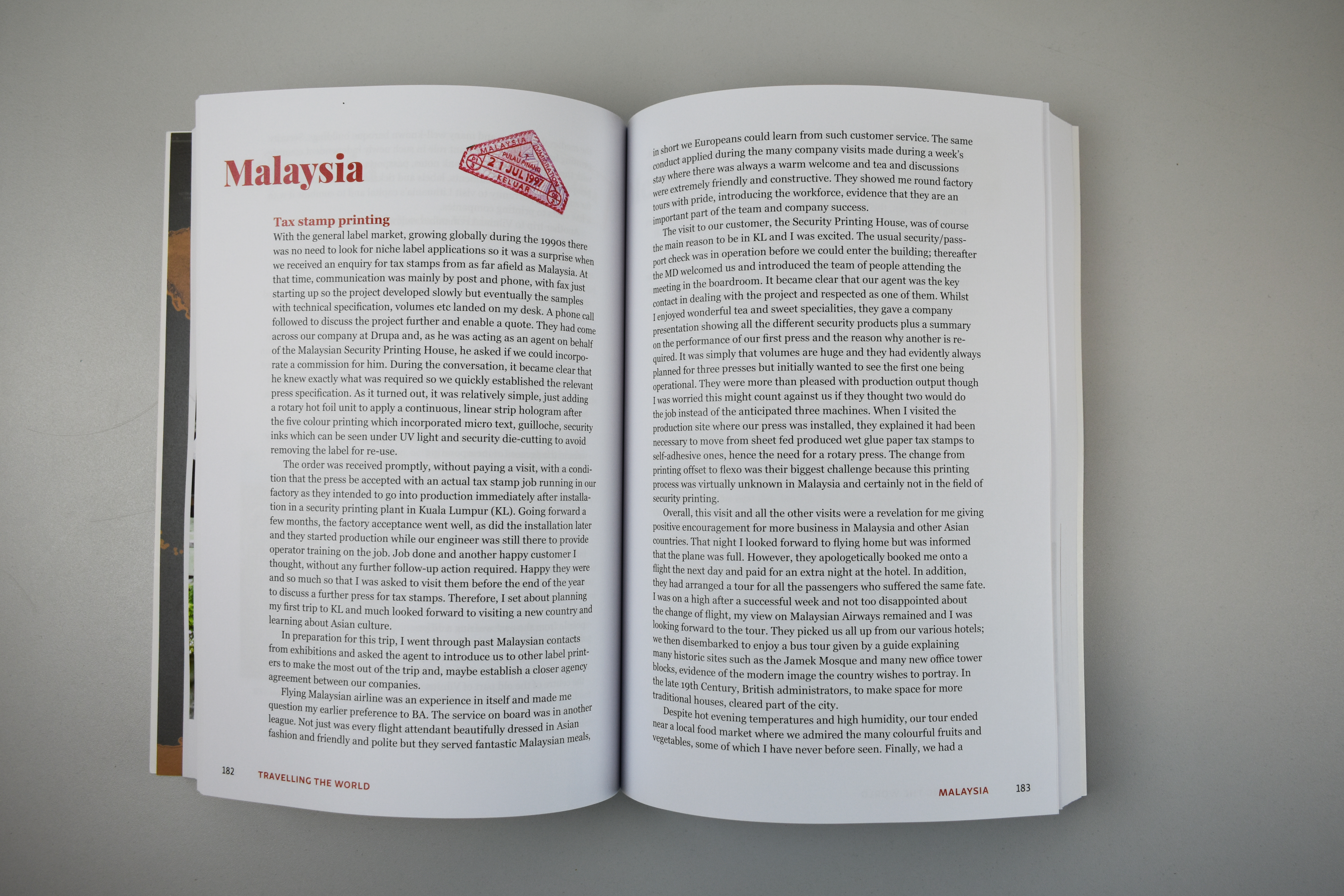

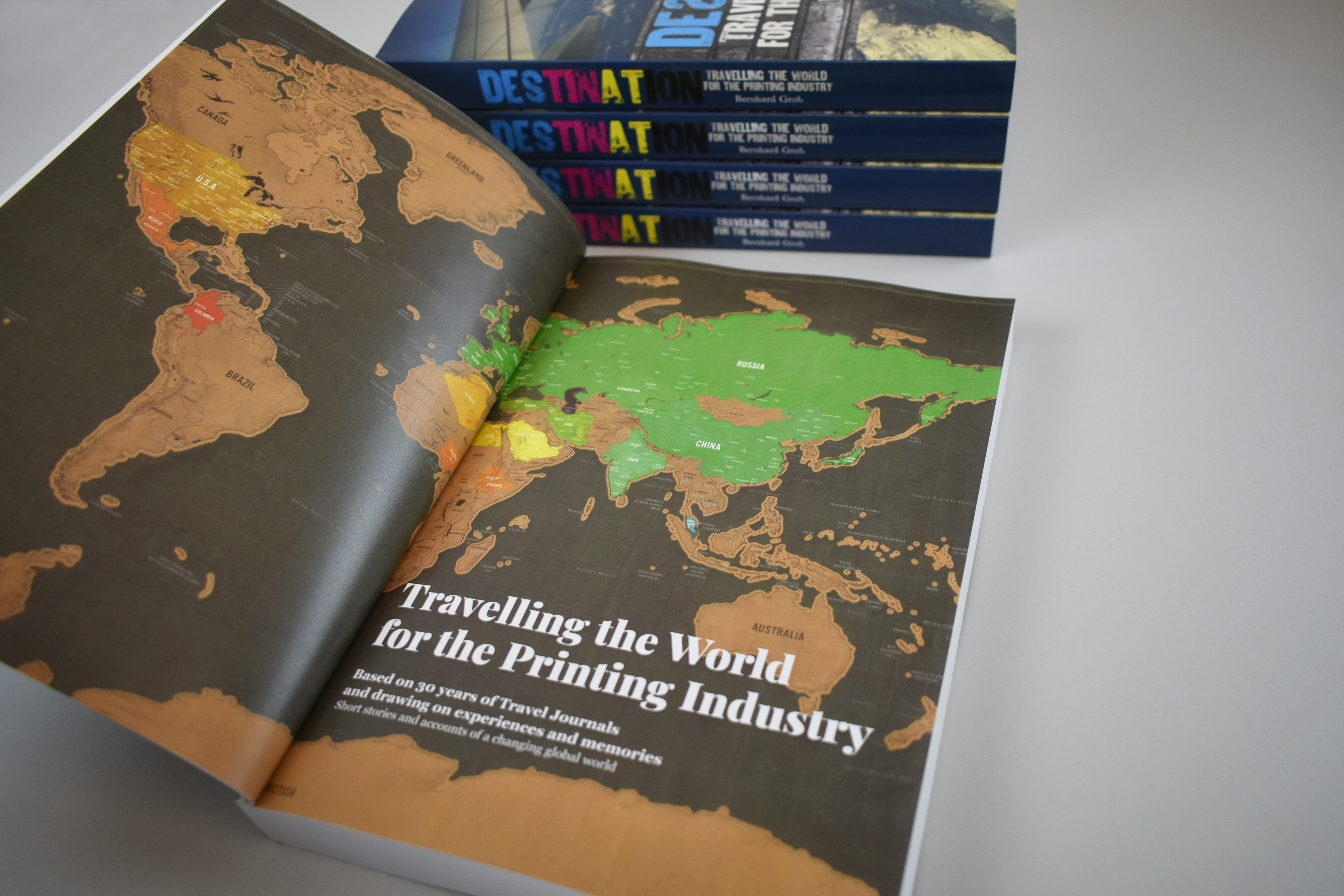
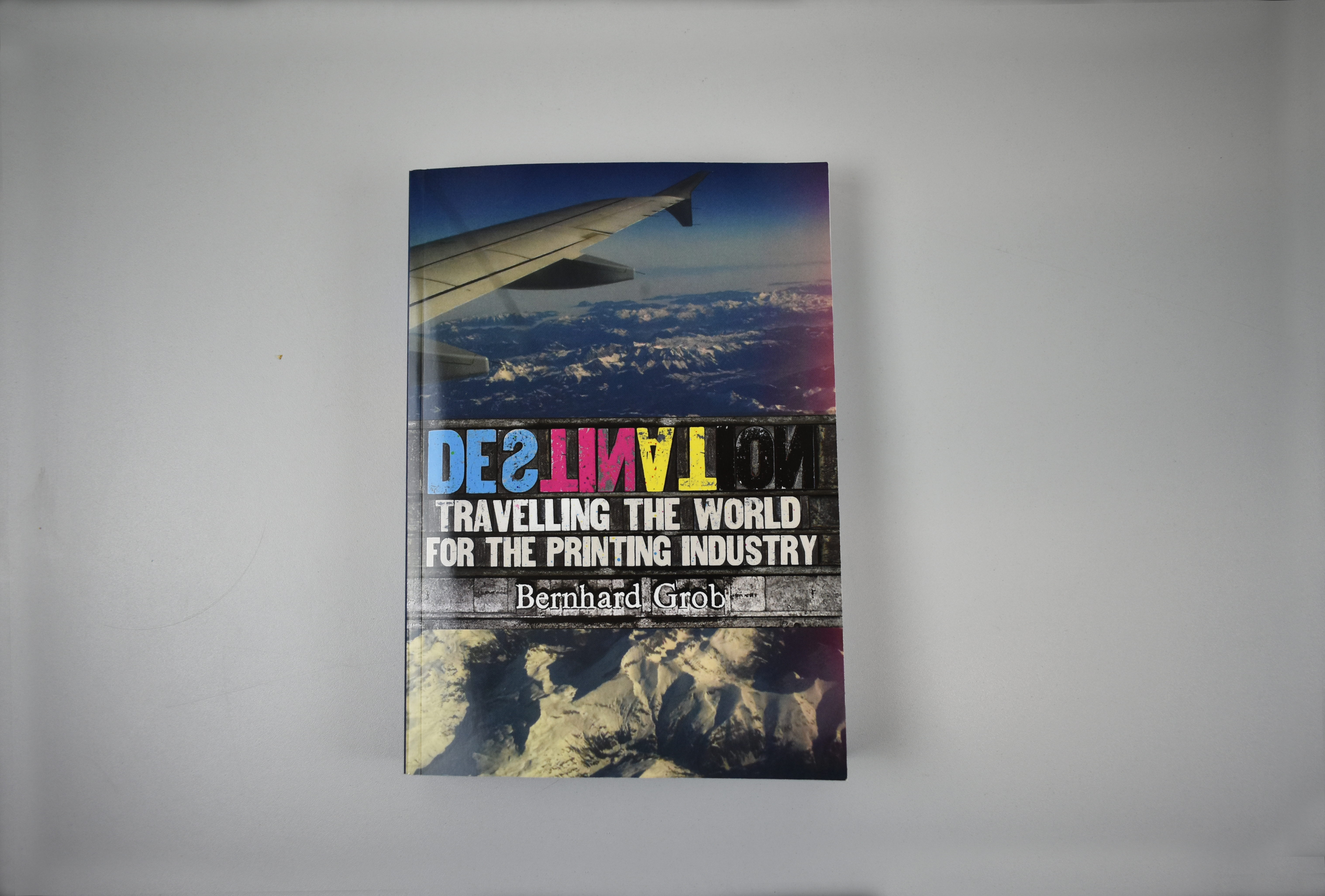
Promotion
The client’s extensive connections within the label and packaging printing industry provided the opportunity for an article in Labels & Labelling to discuss his career and promote the release of the book. Pages from this article can be seen in figures 34-36, in which I provided the images that were used. This article was later translated into Russian for their equivalent magazine, again with further images that I provided.
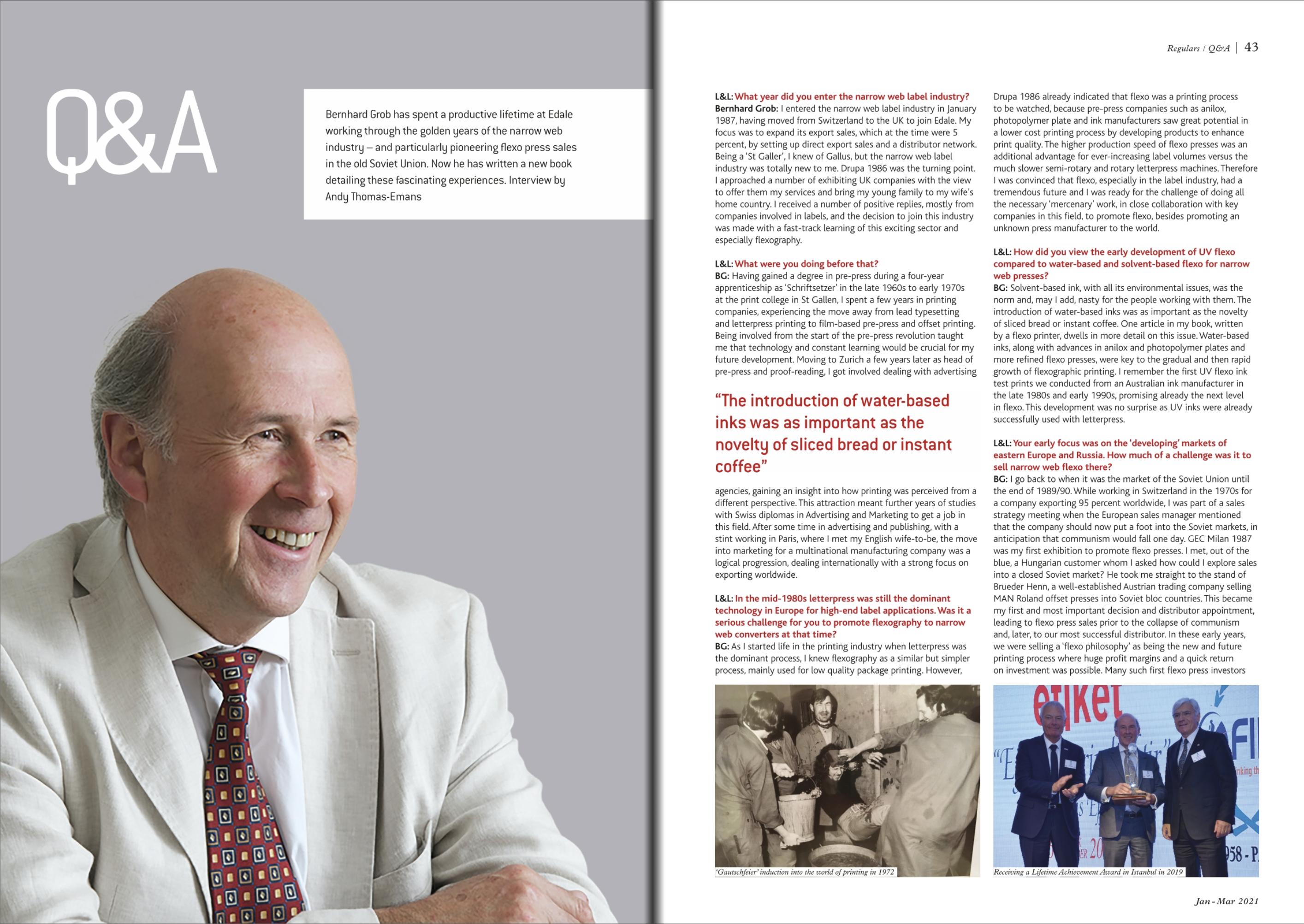
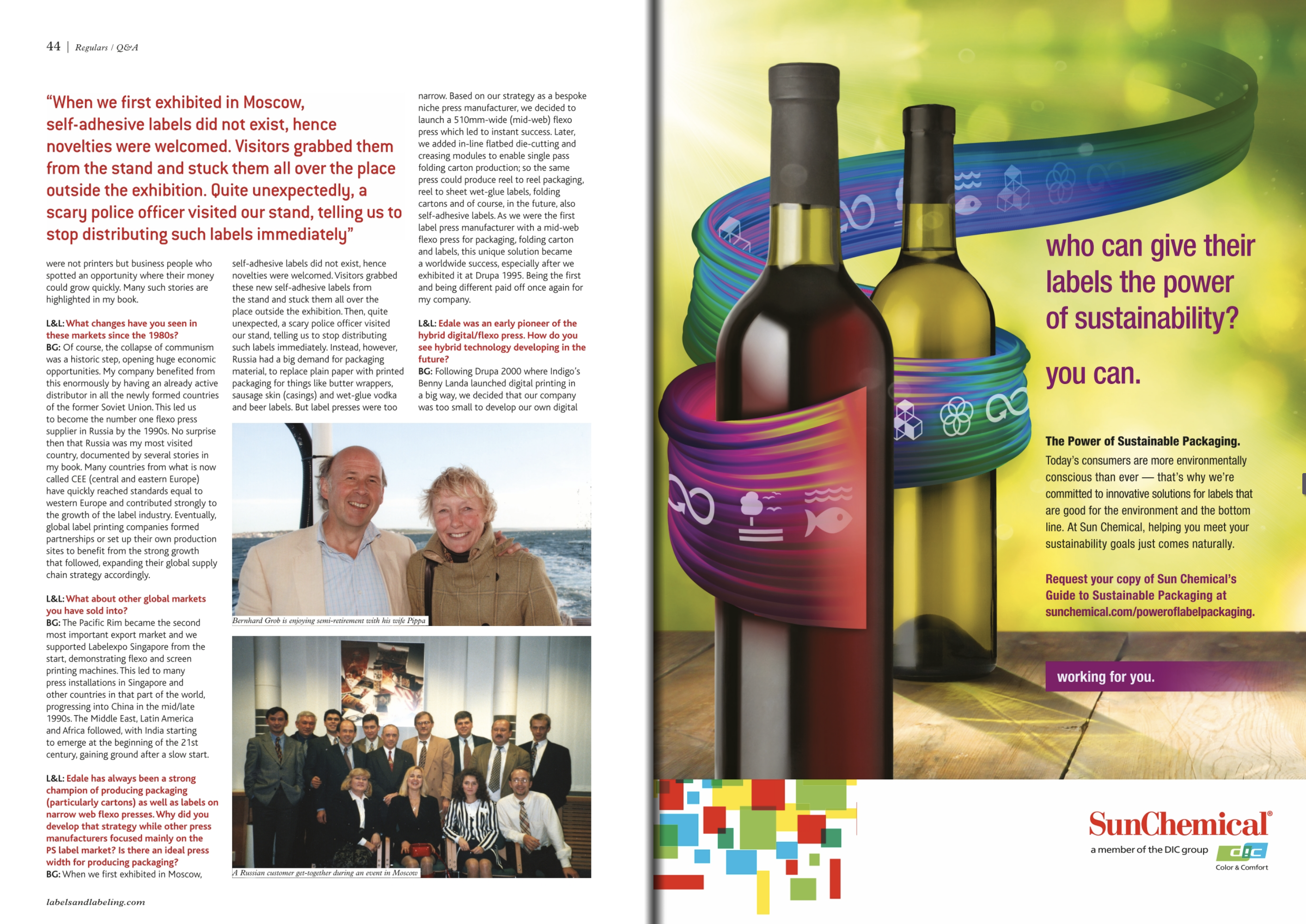
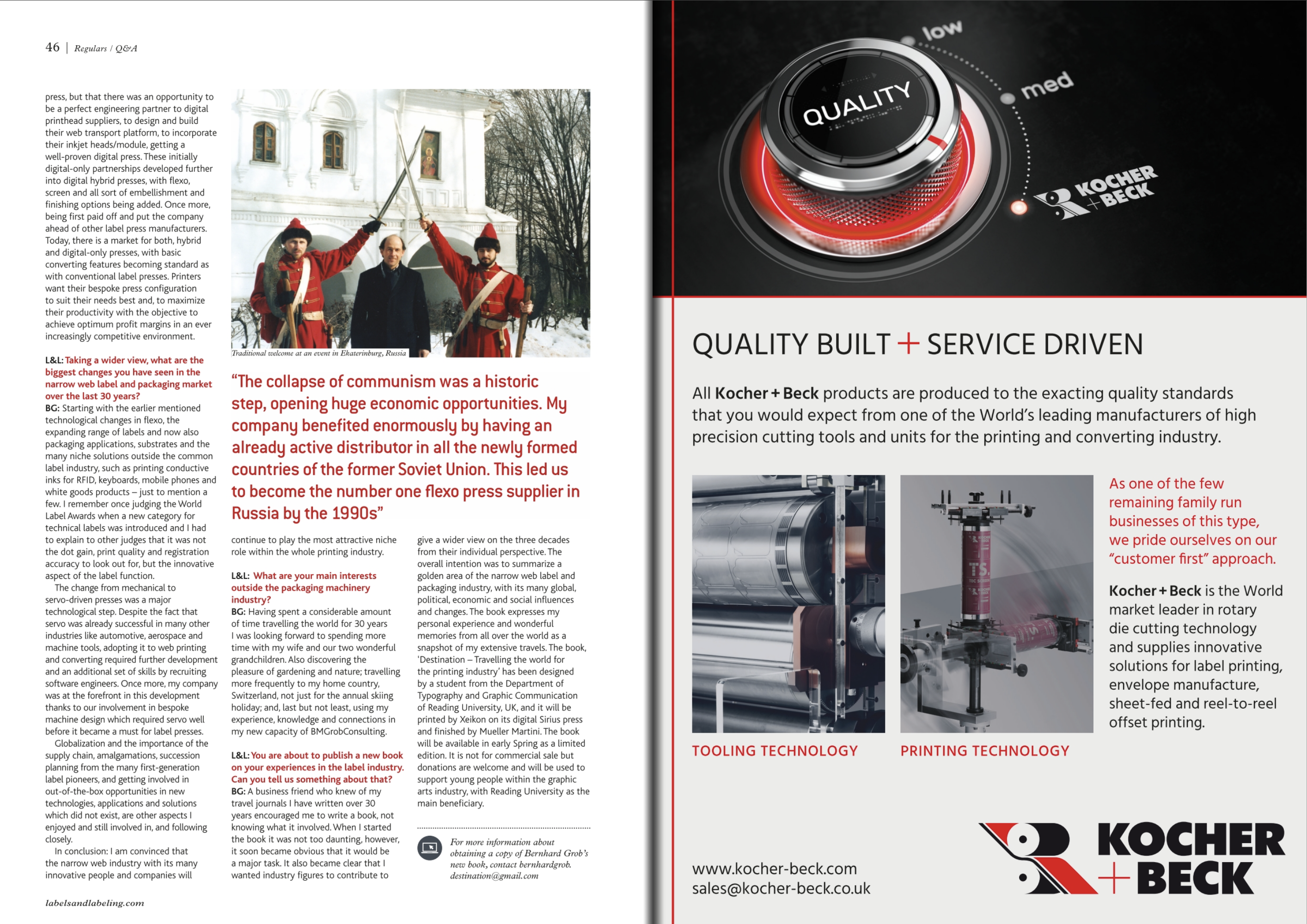
Reflection
Overall, although a long and sometimes challenging process, the actual designing of the book was interesting and fun, especially as the use of colour in the text was encouraged, something unexpected and different to other books I have designed. Organisational skills were a must-have for this project given the large quantity of copy provided, alongside effective editing and selection skills, which I was able to develop.
It was a pleasure working with the client, his own knowledge of design helped facilitate the process and his feedback was always constructive and honest yet friendly. It has also been a great experience for me to work with industry leading printers, gaining a better understanding of large-scale production processes and technical considerations. I am grateful to have had the opportunity to work on such an international project, with the production, promotion and distribution of the book involving many countries.
As an individual project, I have been able to greatly improve my ability to make critical design judgements, now having more confidence to work independently on such large deliverables and becoming more efficient in managing my workload. I have also developed my professional communication skills, having a great relationship with the client, feeling more authoritative in justifying my design decisions and ensuring effective communication between the various stakeholders involved. I am very pleased with how the final book turned out and feel grateful to have been part of this large-scale project, providing a valuable learning experience that I will be able to discuss in job interviews, something that many students will not have had the opportunity to experience.
If you are interested in receiving a copy of the book please contact bernhardgrob.destination@gmail.com.
Client reflection
“After a relatively short online introduction (as it was during the pandemic), Ruth grasped the ideas and intention of my book quickly, coming up with a detailed brief to ensure we both understood each other. The next step included her various design ideas which we talked through and again, quickly agreed on the chosen version. The real work started once I transferred the 140,000-word document, together with numerous photographs in electronic form, as well as some historic actual photographs and documents. It was a real minefield to put all this into the right order and sequence, but Ruth tackled it in a confident, efficient and prompt manner, with fewer queries than I had anticipated.
Dealing with Ruth throughout the lengthy process was a great pleasure and I much appreciated her professional punctuality, accuracy and attention to detail; something I considered rare in a final year student at university, eager to enter the real business world. Her keen creativity and understanding of the author’s mind-set played a key part in completing the design in such a short period of time, leading to the finished file, ready to go to the digital printing press manufacturer for printing. The only negative outcome is that the planned live book production during Drupa 2021 at the digital press manufacturer’s stand was unable to happen due to Covid.
In conclusion, I can highly commend Ruth as an excellent designer with an understanding for the bigger picture. A competent, driven young person with ambition who can lead from the front in the interests of the customer. I am sure she will go a long way in her future career making full use of her skills and entrepreneurial spirit.” — Bernhard Grob, BMGrob Consulting
